From the soaring Sagrada Familia to the spectacular Seville Cathedral, there’s no doubt that Spain is absolutely stacked with stunning monuments, iconic places and pretty as a picture landmarks. Whether it is under the guiding hand of pre-eminent architect, Gaudi, or even the more mainstream look of the country’s most renowned stadium, Camp Nou, you’ll find all manner of incredible buildings to behold, all with their unique Spanish charm. So, with all that in mind, we just had to capture some of the most famous ones; all those landmarks in Spain that have to make a must-visit list. And, to really round out the list, we asked some of the world’s leading travel writers to send us their favourites, all in the name of counting down the top 30 most celebrated Spanish landmarks.
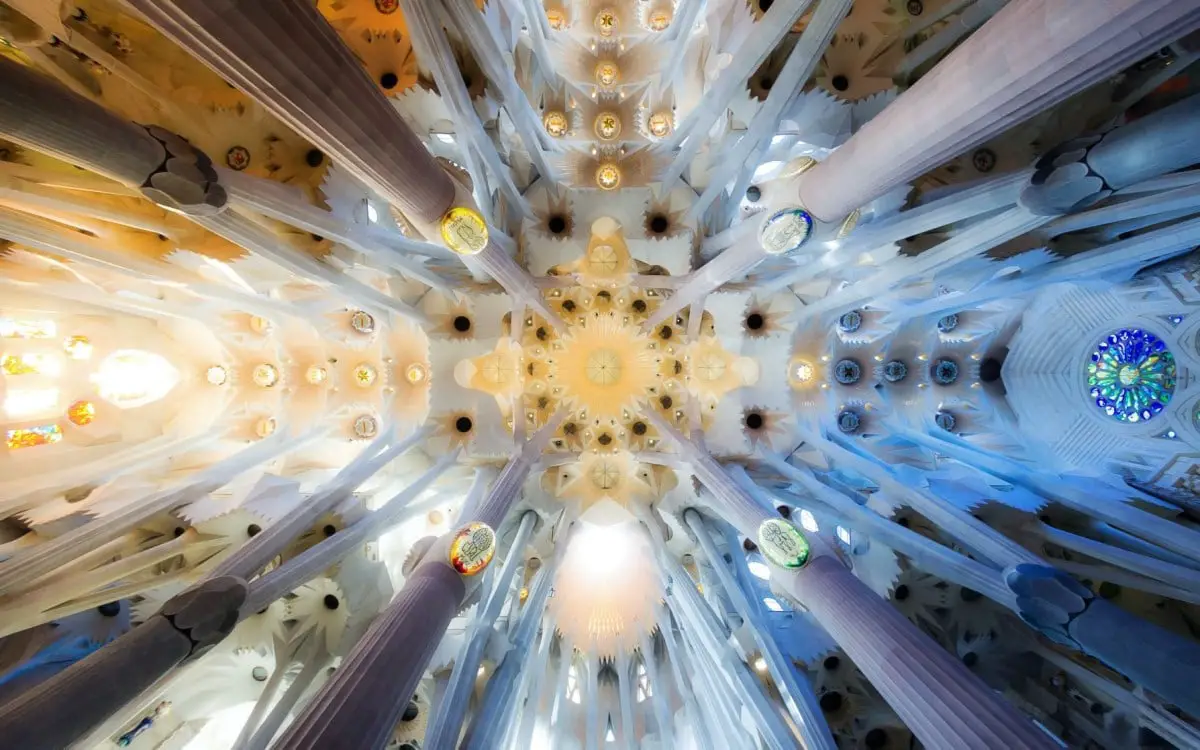
Skip ahead
Our top 10 landmarks in Spain
- La Sagrada Familia
- Seville Cathedral
- Puente Nuevo
- The City of Arts and Sciences
- The Guggenheim Museum
- Aqueduct of Segovia
- Alhambra
- Metropol Parasol
- Mezquita-Catedral
- El Escorial
La Sagrada Familia, Barcelona
Explored by Lee from The Travel Scribes
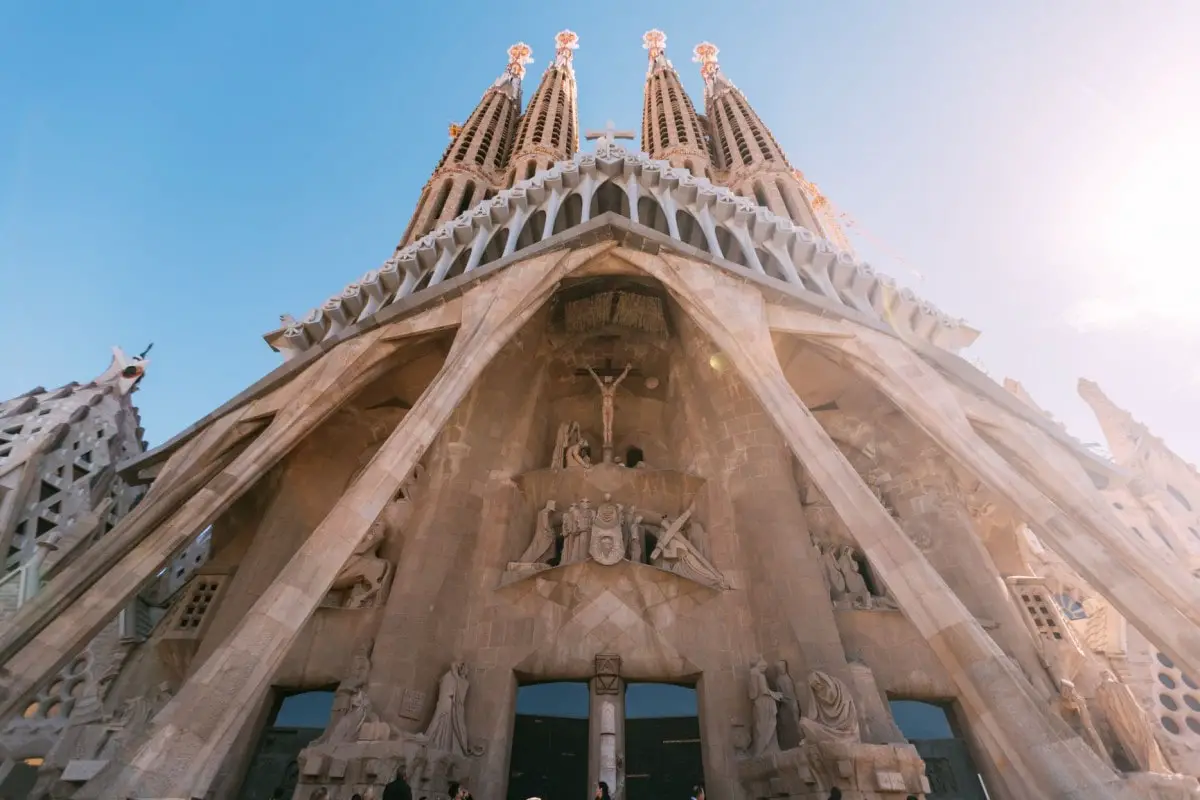
Not only one of the famous landmarks in Spain, La Sagrada Familia is a world-famous landmark and an UNESCO World Heritage site that is actually still under construction!
The foundations for the Basílica de la Sagrada Família were laid in 1882 by architect Francisco de Paula del Villar but within a year he had resigned. Antoni Gaudi, who appears a couple more times on this list, then took over as chief architect, working on the project until he passed away in 1926. At that stage La Sagrada Familia was less than a quarter complete.
Nowadays the building is definitely closer to completion, with construction hoped to be finished by 2026 in time for the centenary of Gaudi’s death.
The basilica is enormous and one of the most decorative and impressive buildings in Spain; an absolute must-visit on any trip to Barcelona.
Seville Cathedral
Explored by Dhara from It’s Not About the Miles
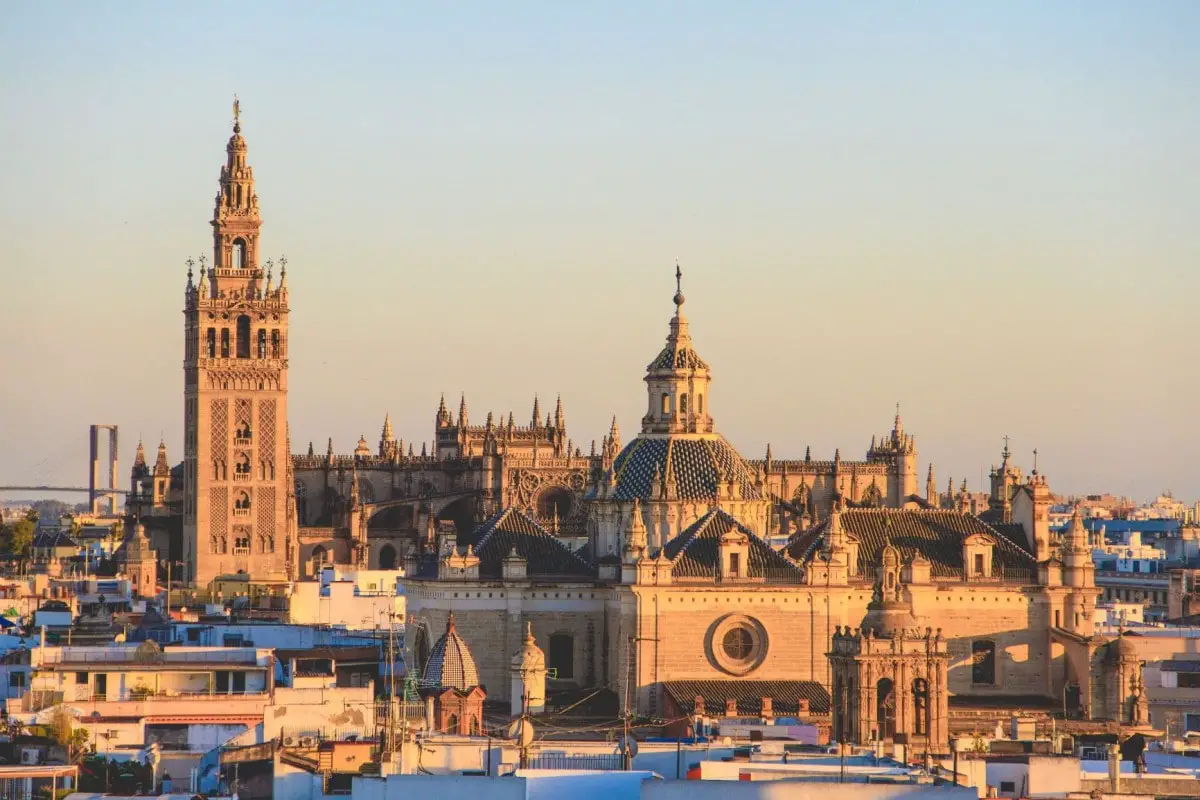
Visiting the monumental Catedral de Sevilla is one of the top things to do in Seville. The Seville Cathedral, officially Cathedral of Saint Mary of the See, is the largest Gothic church in the world. When built, it became the largest church in the world, and its creator’s goal was to build a church so magnificent and so enormous that people would think they were mad.
Together with the Royal Alcazar and the Archive of the Indies, the Seville Cathedral is designated a UNESCO World Heritage Site. With its many beautiful spires, the stunning cathedral dominates the square in which it is located.
Inside, the Capilla Mayor boasts a dazzling altarpiece, gilded with real gold from the New World. Behind this is the ornate Royal Chapel. There are many beautiful side chapels to see, as well as stained glass windows and artwork to admire.
Outside, walk through the beautiful Patio de los Naranjos, the courtyard of the orange trees. When the citrus fruit is in bloom, the courtyard smells heavenly.
La Giralda, the bell tower of the cathedral is stunning at nearly 100 meters. Built as a minaret for the mosque that stood on this site before the Reconquista, the tower is topped by the El Giraldillo weather vane. You can walk the ramp to the top of the tower for spectacular views over the city.
The Cathedral is a hugely popular attraction in Seville. There is a fee to visit, so buy skip-the-line tickets ahead of time if you visit in season.
The City of Arts and Sciences, Valencia
Explored by Or from My Path in the World
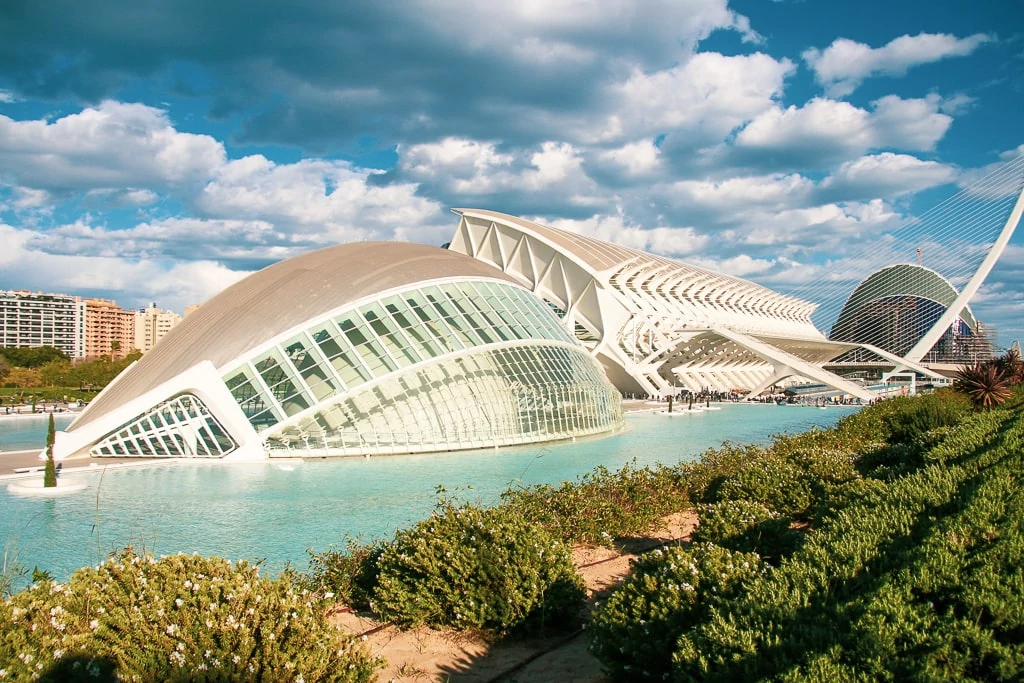
Probably the most famous modern landmark in Valencia, the City of Arts and Sciences is a remarkable one-billion-Euros cultural complex that covers about 350,000 square meters and consists of six different structures. It was designed by Santiago Calatrava and Félix Candela, built in the 90s and 2000s, and is now one of the 12 Treasures of Spain.
The complex is home to the Principe Felipe Science Museum, the Hemisferic (a planetarium and an IMAX cinema), the Oceanografic (Europe’s largest aquarium), the Palau de les Arts Reina Sofia (a performing arts centre), and the Agora, which hosts different cultural events. It’s also where you’ll find the Umbracle, a unique open-air structure of a beautiful garden covered by giant arches.
Wandering around the City of Arts and Sciences, its futuristic architecture and massive size will make you feel like you’ve stepped into another universe. It’s not for nothing that it has become one of the top photo spots in the city, and you can easily spend a couple of hours just exploring it from every possible angle.
Strolling around the complex is free of charge (and is one of the best ways to experience Valencia on a budget). If you want to visit the museums, purchase a combo card to save money because entrance fees vary from museum to museum and some of them can be a bit pricey.
Puente Nuevo, Ronda
Explored by Stuart from Just Travelling Through
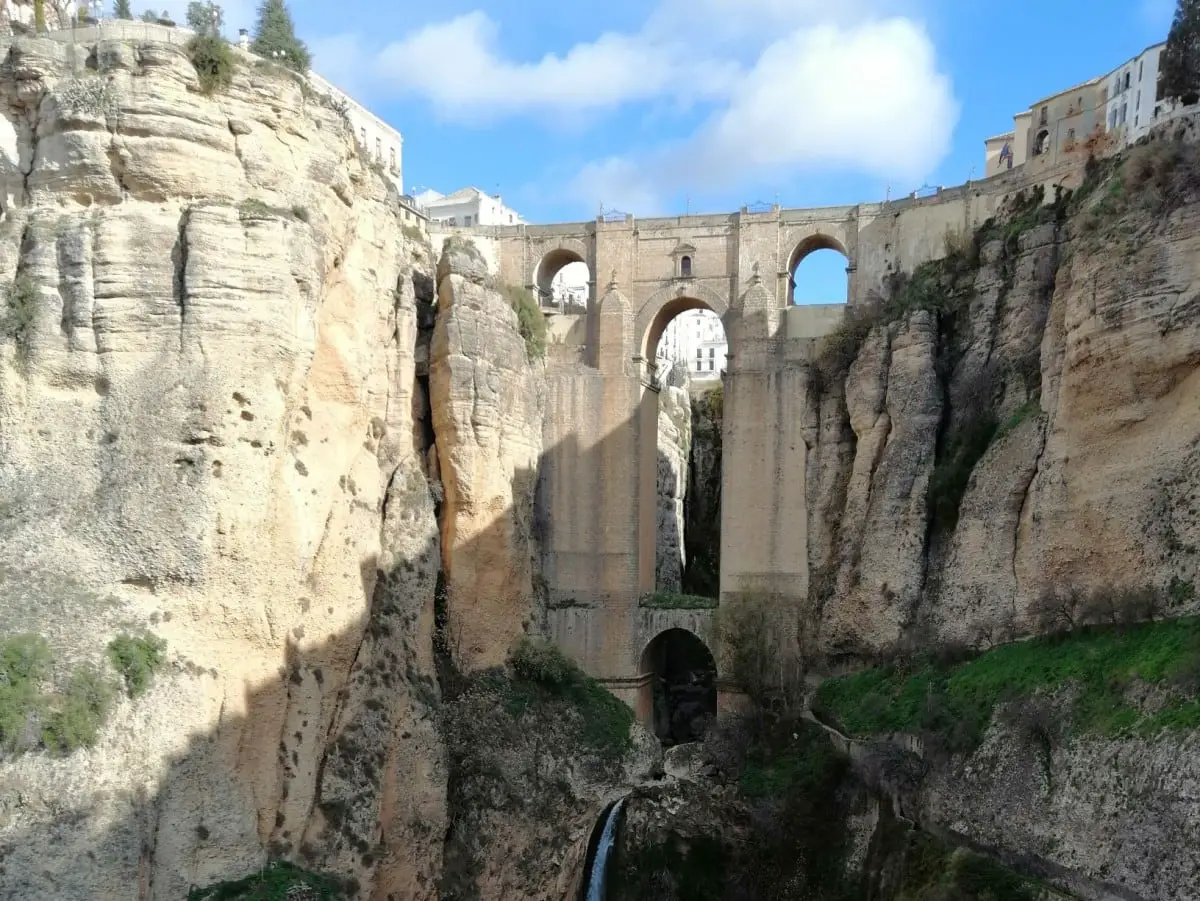
The South of Spain has many highlights, as you might expect from an area with such a rich history and amazing architecture. One of the most famous is located in the small town of Ronda, just a short distance from Malaga. Ronda’s Puente Nuevo (or ‘New Bridge’) separates the old town from the new as it spans the dramatic El Tajo gorge.
To get the best views of Puente Nuevo head along Calle Tenorio (on the right after the bridge) and follow the trail leading down to the bottom of the gorge. From there gaze up in wonder as Puente Nuevo towers above you. Later follow the pathway a little further back to see Puente Nuevo in full view and appreciate the full majesty of this impressive feat of engineering.
Once you’ve strained your neck for long enough at the foot at the bridge, why not try something a little challenging and search for the secret Via Ferrata? It’s a series of metal steps connected to a cliff face that take you all the way to the viewpoint at the bottom. It’s certainly not the easiest way down and can take a little finding, but once your feet return to solid ground it definitely feels worth all the effort.
Royal Palace of Madrid
Explored by Dymphe from Dymabroad
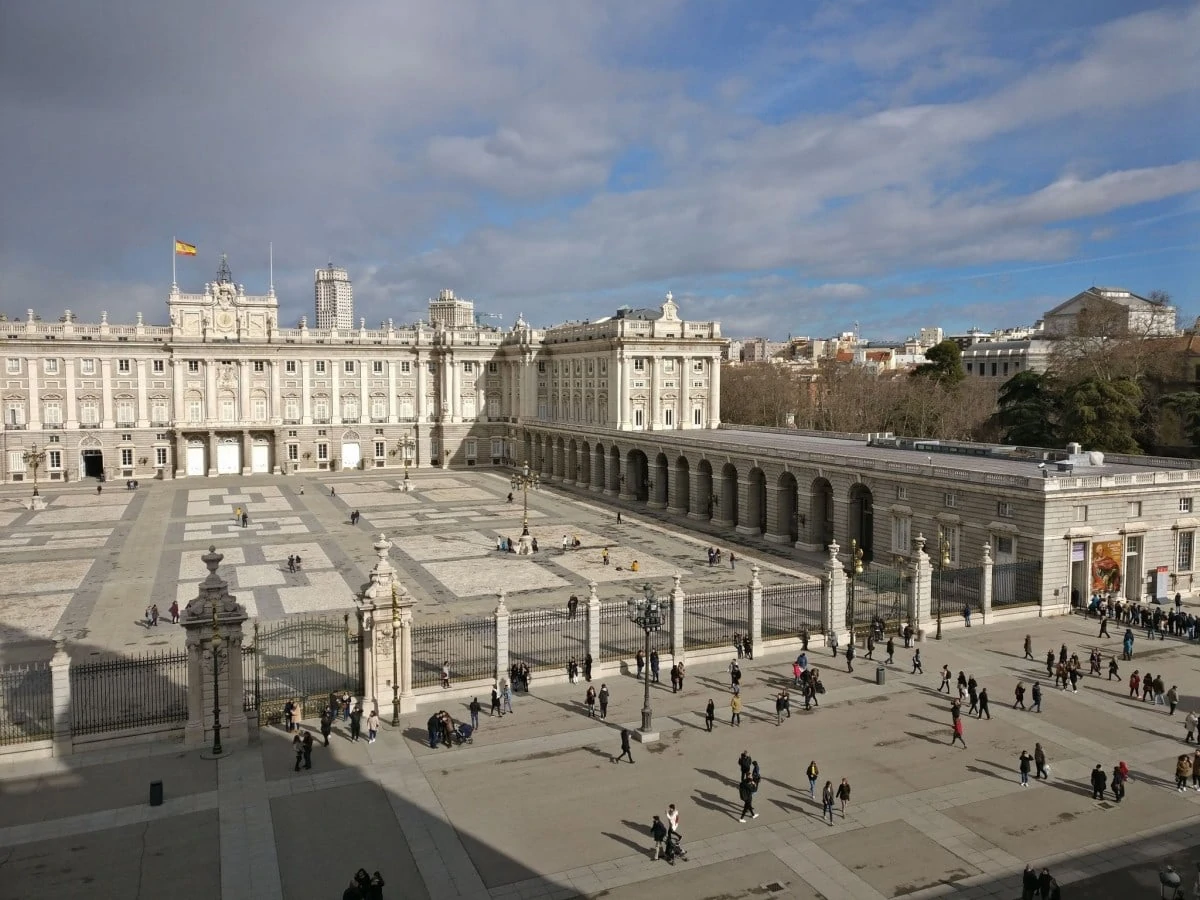
One of the most iconic buildings in Spain is the Royal Palace of Madrid. This beautiful building is located in the capital of the country and you should definitely visit it. It is an impressive building, huge in fact, with about 3500 rooms! What’s more it is the largest royal palace in Europe!
Not only is the outside of the building remarkable, but there is also so much to see on the inside! There are paintings by de Goya, Caravaggio, and many other famous artists. Also, there are loads of beautiful objects to see, such as watches, silverware, and furniture.
What’s also interesting about this palace is that it is still in use! It is the official residence of the Spanish royal family, but the King and his family don’t live there. And nowadays it is mainly used for official ceremonies.
At any time of the year you can visit the palace grounds and you can witness the changing of the guard, which is really fun to see. However, if you want to get inside the palace you have to pay an admission fee of €6.50 (7.70 USD/6 GBP).
Although if you’re on a budget and keen to enter, you can also get in for free from Monday till Thursday between 5.00pm and 7.00pm and it’s good to also note that citizens of the European Union also get free entry.
If you’re looking for awesome activities when visiting the city, then I’d definitely recommend that you check out some of the amazing museums in Madrid!
El Escorial
Explored by John Paul from The Hangry Backpacker
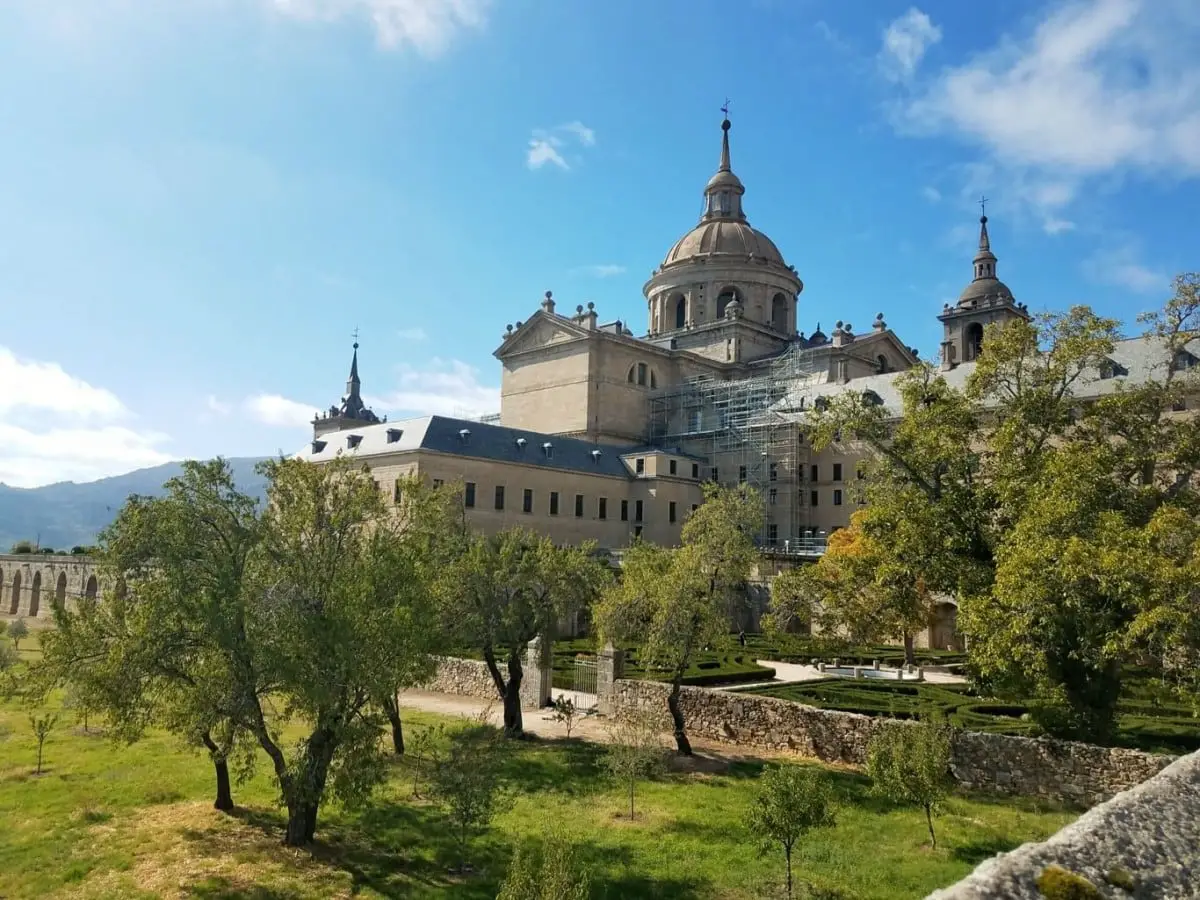
El Escorial is one of the largest and most historic landmarks in Spain. The imposing structure is a former centre of education, monastery and royal residence, today functioning largely as a museum and religious centre.
The massive Spanish landmark of San Lorenzo de El Escorial sits in a small town about an hour from Madrid. It can be easily reached via car, bus or train. Although El Escorial is fairly easy to reach, it is important to allocate plenty of time for a visit. The size of the complex can’t be understated.
Among the notable parts of El Escorial – those that are open to visitors include the nearly-500-year-old Spanish landmark has a huge basilica, famous works of art, ornate libraries and preserved royal living quarters. The map room and Hall of Battles are particularly fascinating. The site offers a glimpse into Spanish history as well as the life and wealth of the Spanish Royal family during centuries past.
Perhaps the most famous feature of El Escorial is the Royal Pantheon, the subterranean crypt with the elaborate tombs of Spanish kings and queens. While the silence is slightly eerie, the room itself is a stunning spectacle of Spanish history.
For a thorough tour, plan for several hours to wander the grounds. El Escorial is an imposing landmark in Spain that is more than a large and interesting royal site, it’s a beautiful display of Spanish history well worth an easy day trip from Madrid.
Consuegra Windmills
Explored by Emily from Wander-Lush
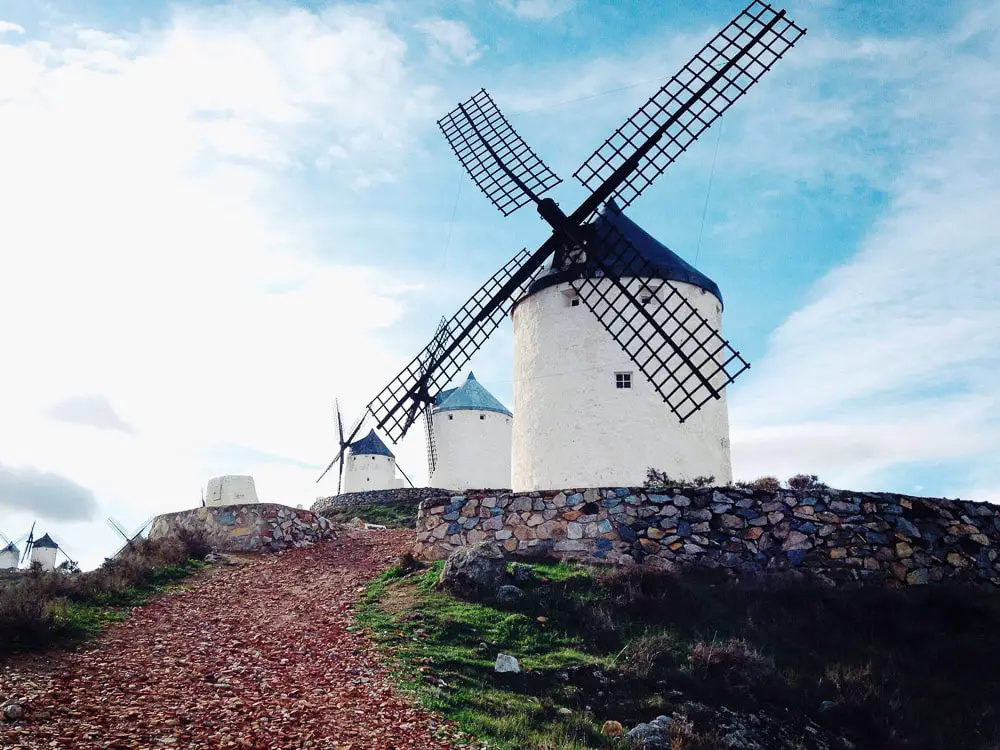
The Molinos de Viento de Consuegra, or Consuegra Windmills, are another iconic landmark in Spain. Not only are the windmills celebrated for their beauty and historic value, but also for their significance to Spanish literature and the arts.
The windmills’ reputation is largely thanks to the novel Don Quixote, which is set in this part of the country. When author Miguel de Cervantes famously described his protagonist as ‘tilting at windmills’, it was these whitewashed towers that he was referring to.
The windmills are located on the outskirts of the small town of Consuegra in central Spain’s Toledo Province, roughly 1.5 hours’ drive south of Madrid. There are 12 in total dotted along on the Calderico Ridge, surrounded by a pretty patchwork of agricultural fields and the River Amarguillo below.
When they were built between the 16th and 19th centuries, the windmills served a practical purpose, harnessing wind power to grind grain. Each one was privately owned and passed down through generations of the same family until they were eventually retired in the 1980s. Diligent restoration has ensured the windmills appear much the same as they did when Don Quixote was published in 1605. Each one has since been renamed after a character from the book.
Four of the towers still have their original machinery inside. Others are used as event spaces, including the Molino Sancho windmill, which hosts an annual Saffron Festival in October. There’s also a small museum, a visitor’s centre and a gift shop on site.
The easiest way to visit historic La Mancha and see the windmills up close is by driving down from Madrid. Try to arrive early before the tour buses roll in.
Metropol Parasol, Seville
Explored by Caroline from CK Travels
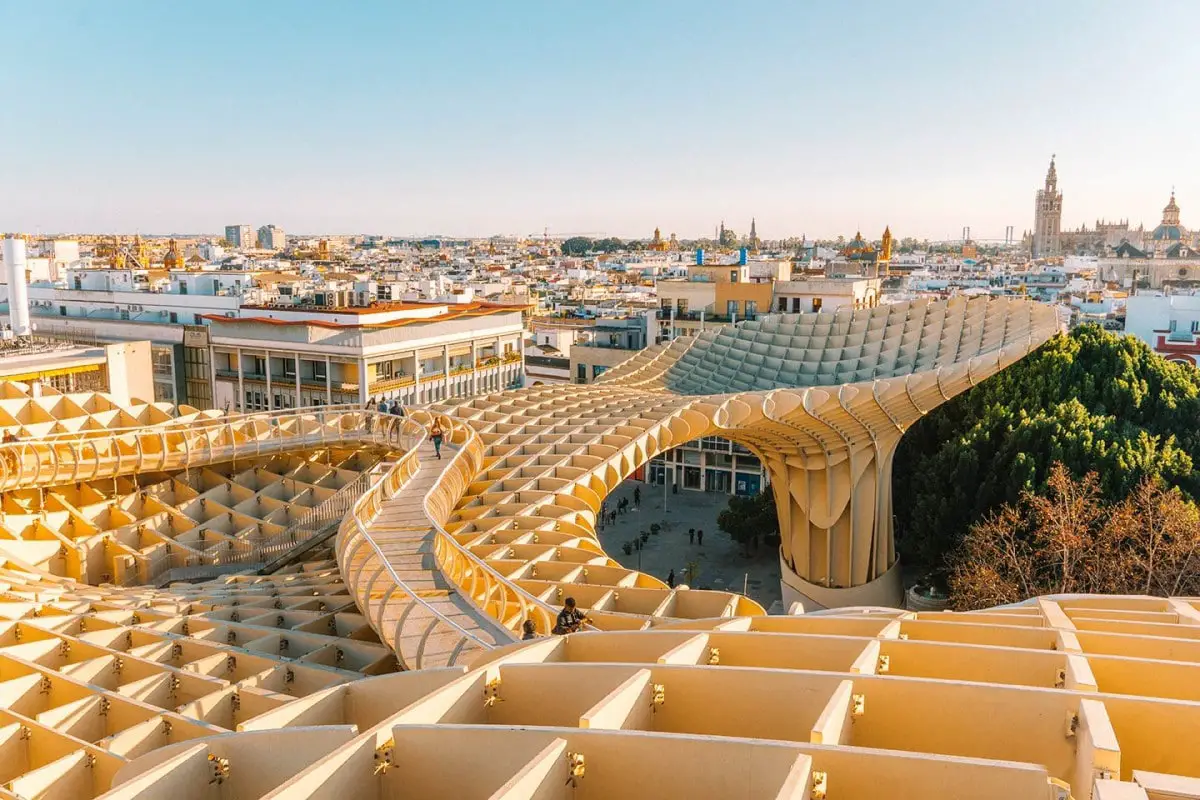
Metropol Parasol or Las Setas De Sevilla is affectionately known as the ‘mushroom’ and is one of the most interesting landmarks and top things to do in Seville. This unique and iconic structure was designed by the German architect Jürgen Mayer and opened in 2011 after six years of construction. It is said to be the largest wooden structure in the world and consists of six 85 foot high curvy parasols in the shape of giant mushrooms – a striking contrast with the architecture of Seville’s old town.
At the top of the structure is a network of walkways and viewing decks on various levels that you can walk around for excellent panoramic views of Seville city and amazing photo opportunities. To access the top of the structure you will need to take a lift up at a cost of 5 EUR per person (6 USD/4.50 GBP).
We totally recommend you time your visit just before sunset for glorious red hued views of the city. The evenings are a little busy though so if you want to visit with no crowds, head up first thing in the morning. There is also a café at the top which sells alcoholic drinks, smoothies and snacks if you need to refuel.
Camp Nou, Barcelona
Explored by James from The Travel Scribes
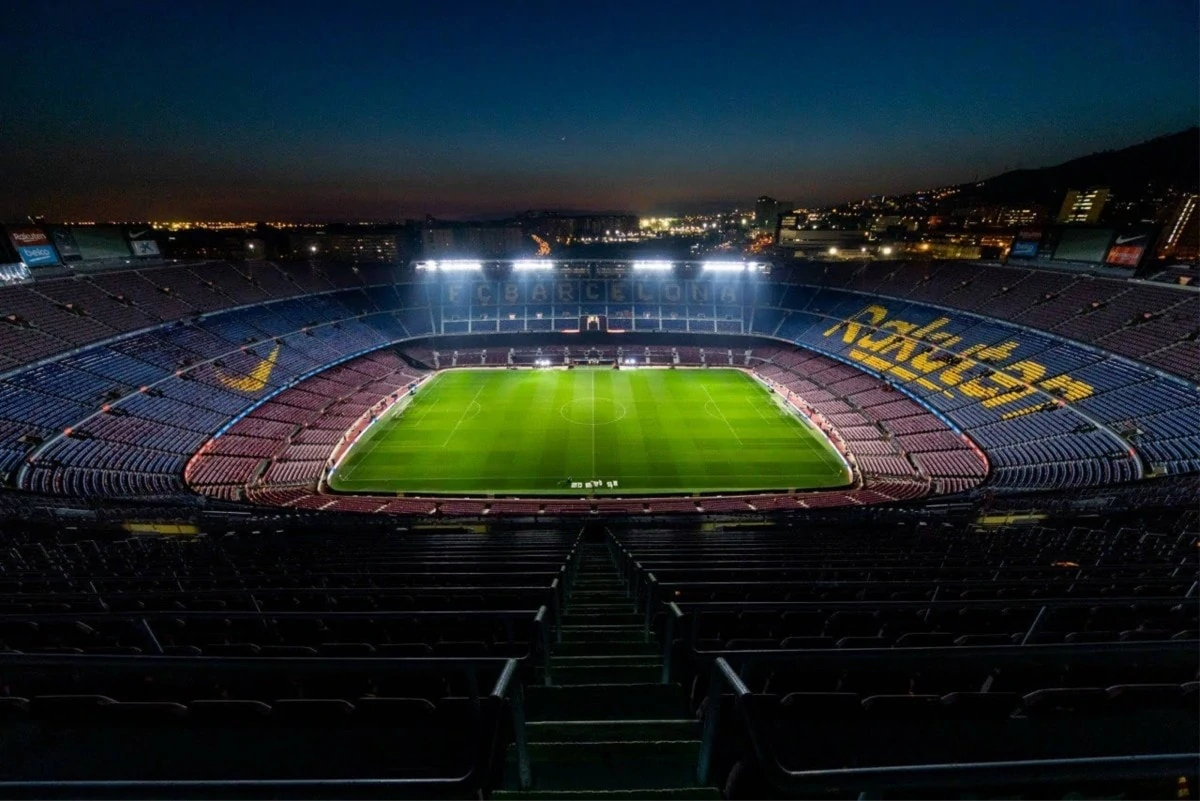
Spain and the beautiful game go as well together as tapas and sangria, so it’s no surprise that one of the most famous football stadiums in the world makes it onto our list of the most famous Spanish landmarks.
And home to probably the most exciting football team over the last decade, Camp Nou is the stadium that hosts Barcelona FC.
If you are a football fan (or maybe even if you aren’t), we’d highly recommend adding a Camp Nou stadium tour to your Barcelona itinerary. The basic stadium and museum tour will cost you around 26 EUR per person (30 USD/23.75 GBP)… Or if you happen to be in town when Barcelona are playing a home match – maybe go that extra mile to try and get a ticket to feel the atmosphere of a full almost 100,000 seater Camp Nou!
The Guggenheim Museum, Bilbao
Explored by Karen from Are We There Yet Kids
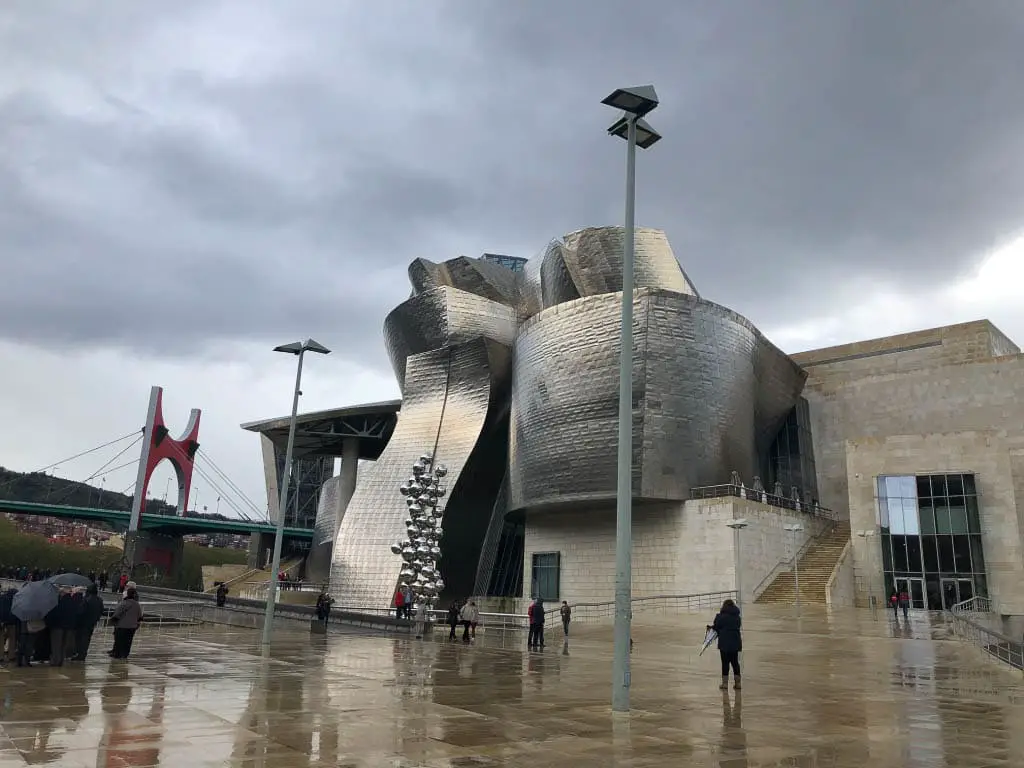
The Guggenheim Modern Art Museum is located in Bilbao, in the Basque Region of Spain. It’s full of stunning installations from both well-known and upcoming contemporary artists. Whilst the exhibits and famous names are enough to draw crowds from all across Europe, the building itself is the most spectacular part of this museum.
Designed by American architect Frank Gehry the structure is sleek, curvaceous and stands proud next to the Nervion River. Constructed with titanium cladded sheets, the walls reflect the surroundings meaning the colours seem to change as often as the weather.
The iconic design is complemented by large-scale outdoor installations such as the 12-metre-tall, flower covered Puppy by American artist Jeff Koons and the atmospheric Maman Spider by Louise Bourgeoius which stands 9 metres high. Fans of the Chicago Bean will love Tall Tree and the Eye by Anish Kapoor encompassing 73 reflective balls precariously balanced, 13 metres high.
Inside the Museum you’ll find both permanent and temporary exhibits from established and emerging artists ensuring there is something to suit every taste. Be sure to take the free audio tour which will explain each installation in more detail.
Once you’ve finished your visit, the Nerua Restaurant in the Guggenheim is the perfect place for dinner. Chef Josean Alija creates amazing seasonal Basque specialities in beautiful surroundings.
Alhambra
Explored by Ucman from Brown Boy Travels
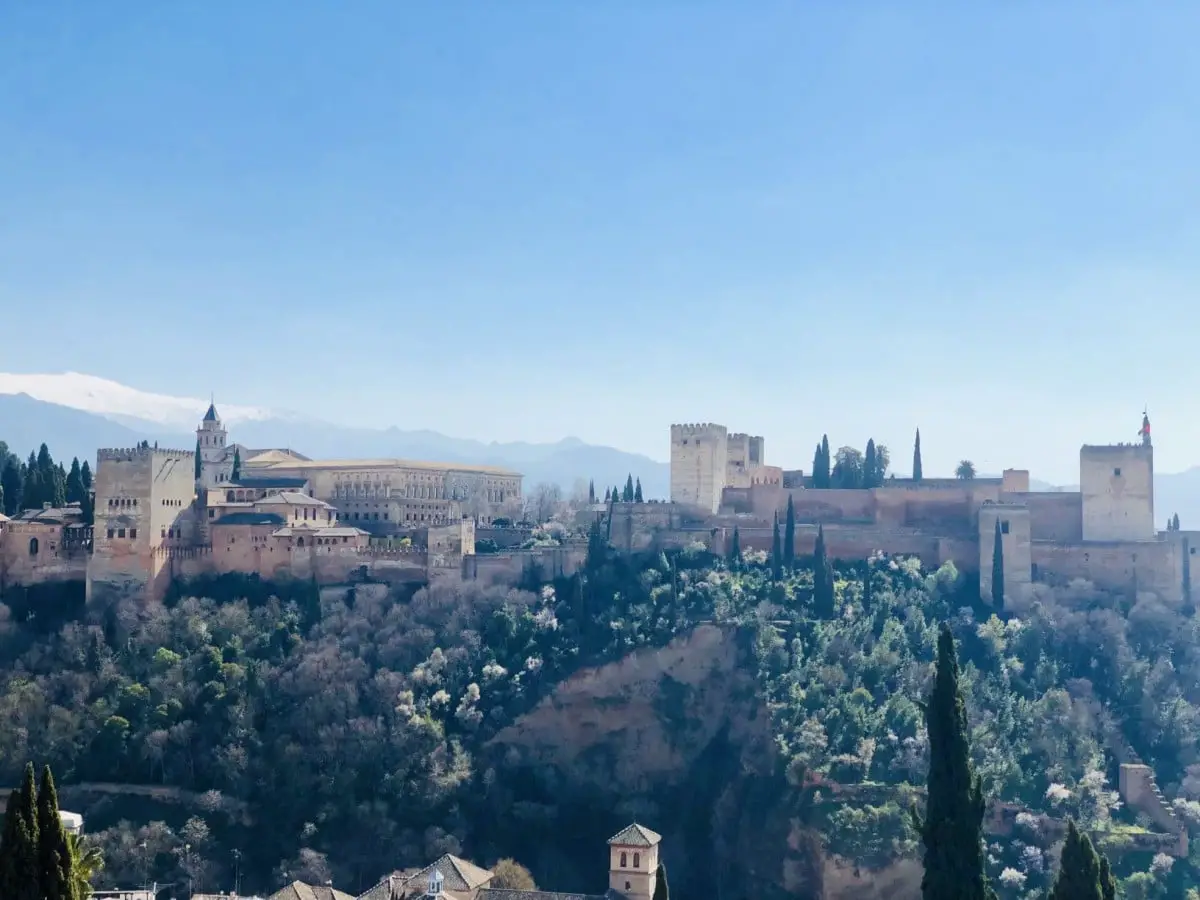
Alhambra is the most visited site in all of Spain. This beautiful UNESCO World Heritage site in Granada offers intrigue, architecture, history, beauty and live all in one place. First off, it is not a single palace or building but rather a complex with many palaces, gardens and fortress walls.
At its heart are the Moorish palaces both winter and summer.
The moment you enter the complex you cannot be but impressed at the scale of this gorgeous place that has inspired so many including the Catholic rulers of Spain who couldn’t bring themselves to destroying these icons of Moorish rule.
The entrance to winter palace is timed and if you miss it, you’d need to buy another ticket for another day, be careful!
It is hard to describe the details of decor so intricate from walls to ceilings that’s carved with geometric patterns and wood. Colours and mirrors are woven so intricately and masterfully that you cannot look elsewhere.
The courtyard of lions is the centre of this palace. You should spend a quiet moment here between the groups of tourists passing by – it will reveal a secret or two of its glory.
The summer palace or Generalife as it’s known is another world of water mist through fountains mixed with colours and scent of flowers and greenery.
The visit to Alhambra doesn’t end at the walls of Alhambra though. Take a seat in Albyzin district after dark on a full moon night to experience the charm of this marvel that dazzles you day or night, near or far.
The Gothic Quarter, Barcelona
Explored by Veronika from Travel Geekery
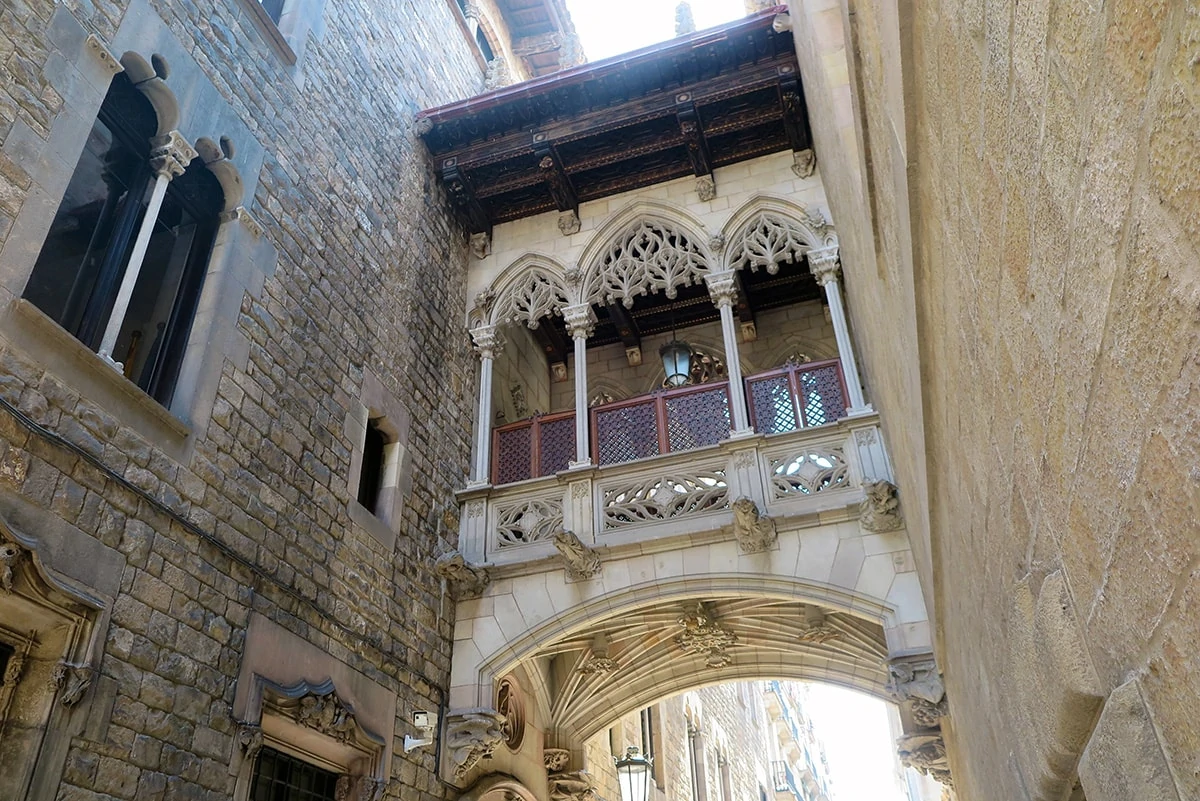
The whole Gothic Quarter in Barcelona belongs to one of the top tourist sites in the city. While some of the monuments found in the Gothic Quarter do indeed come from medieval times, others were rebuilt or constructed anew to add to the appeal of the Quarter during the early 20th century to prepare the city for the World Expo in 1929.
That’s the case of El Pont del Bisbe, the no. 1 photo spot in the area. This ornate bridge connects two buildings and has non-functional gargoyles sticking out.
At Plaça Reial, you’ll find columns of an ancient Roman temple called El Templo de Augusto from the first century BC, hidden away in a courtyard of one of the residential buildings.
The Barcelona Cathedral forms the real heart of the Gothic Quarter. Originally built in the 13-15 centuries, it received a major neo-Gothic makeover in the early 20th century, which Antoni Gaudí hated.
You’ll find a cluster of historical buildings at the square Plaça del Rei. Don’t miss the large palace Reial Major, featuring even some add-ons from the Renaissance era. Right next is Casa Padellàs housing Barcelona’s Museum of History. This nobleman’s house was originally located at the Vía Laietana, but was moved to its current location during the major makeover of the area for the 1929 World Expo. Vía Laietana was full of Roman houses, but it fell prey to a large boulevard present here now.
The beautiful little square called Plaça de Sant Felip Neri has a historical-looking fountain, which is just 50 years old, and a wall full of holes made by fascist bombs during the Spanish Civil war.
Santiago Bernabeu Stadium, Madrid
Explored by James from The Travel Scribes

And of course, we couldn’t include the home of Barcelona without the home of the Galactico’s, the most famous football team in the world and their beloved stadium, the Bernabeu.
Real Madrid are the most successful team in the world, and their 82,000 seater Santiago Bernabeu Stadium is up there with Camp Nou as one of the most renowned stadiums in the world, so another essential on our list, and must-visit on any Madrid itinerary.
If you’re keen to get up close and personal with the stadium, they also have a stadium tour with tickets costing from as little as 14 EUR (16.50 USD/12.75 GBP).
Monastery of Santa María de Guadalupe
Explored by Wendy from The Nomadic Vegan
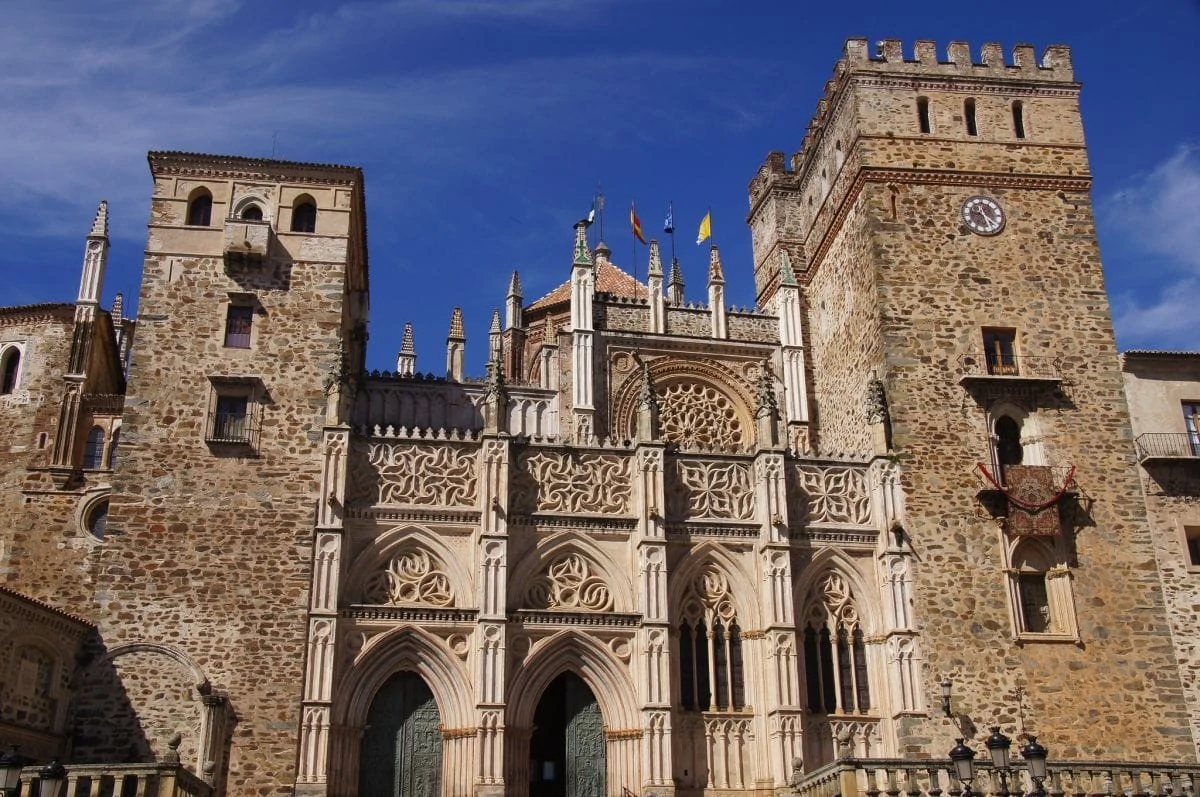
While this monastery in Spain’s Extremadura region does get a steady stream of Spanish tourists and religious pilgrims, it’s quite off the radar for most foreign visitors to Spain. But all those people who skip over it are really missing out. A trip to this remote region of Spain would be worth it just for the history and architecture of the building alone. But what really makes a visit to the Monastery of Santa María de Guadalupe extra special is the opportunity to dine and even sleep inside this historic building, and for a very reasonable price.
A chapel was first built here in the 13th century at the place where a statue of the blessed Virgin Mary was miraculously discovered on the banks of the Guadalupe River. King Alfonso XI later attributed his victory in battle to the intercession of Our Lady of Guadalupe, and the chapel became a royal sanctuary and was greatly expanded. For several centuries, the Monastery of Santa María de Guadalupe was considered to be the most important of all the monasteries and convents in Spain.
Even today, it’s still a working monastery, and the monks who live here also run a restaurant and guesthouse that are part of the monastery complex. The restaurant tables are set up in the courtyard of one of the cloisters, while the guesthouse rooms are converted monks cells. As you might imagine, the rooms aren’t exactly luxurious, but they are very budget-friendly, and spending the night inside this beautiful monastery feels like a luxury in itself.
Casa Batlló, Barcelona
Explored by Lee from The Travel Scribes
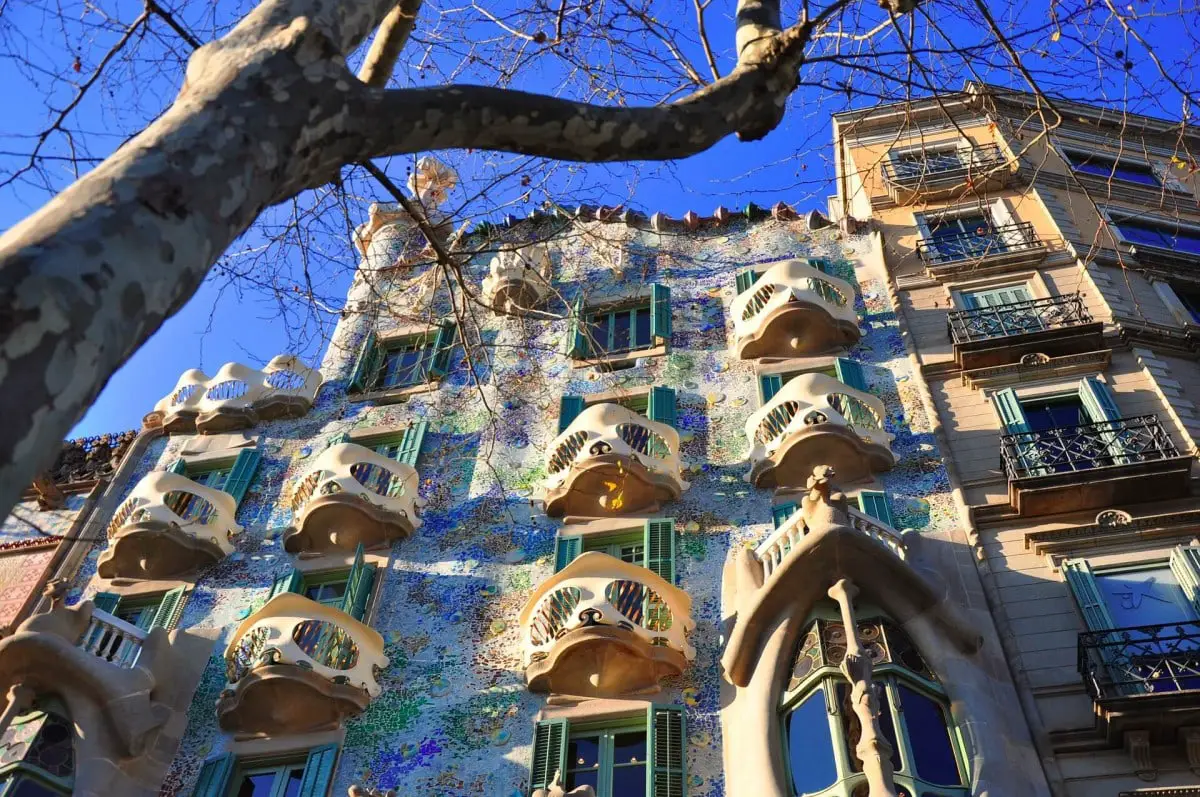
Of course, the Sagrada Familia is Antoni Gaudi’s most famous work. But his masterpieces are sprinkled all over Barcelona, with his Art Nouveau style evident in many buildings dotted across the city. One of the most famous is definitely Casa Batlló (also called Casa Butlló), a home redesigned by Gaudi in the early 1900’s.
Originally constructed as a classical building 1877, it was later bought by the prominent textile magnate, Joseph Batlló. Batlló really wanted to tear down the house but, after consulting with Gaudi, he decided to let the architect renovate it instead, and the resulting home is a sight to behold. Nicknamed Casa dels ossos (or the House of Bones), the building has an almost skeletal façade. Adorned with broken ceramic tiles in fascinating mosaics, as well as odd-shaped windows and flowing stonework, the building is ‘typical Gaudi’; unusual and difficult even to describe. The roof, however, is the crowning glory of the external façade, often referred to as a ‘dragon’s spine’, depicted in colourful tiles with four chimney stacks.
It’s well worth a turn inside too, as this UNESCO World Heritage site also houses a museum on the ‘noble floor’, alongside other treasures like Batlló’s study and a mushroom-inspired fireplace, specifically created for loved-up couples!
The Universidad Laboral de Gijón
Explored by Dagney from Cultura Obscura
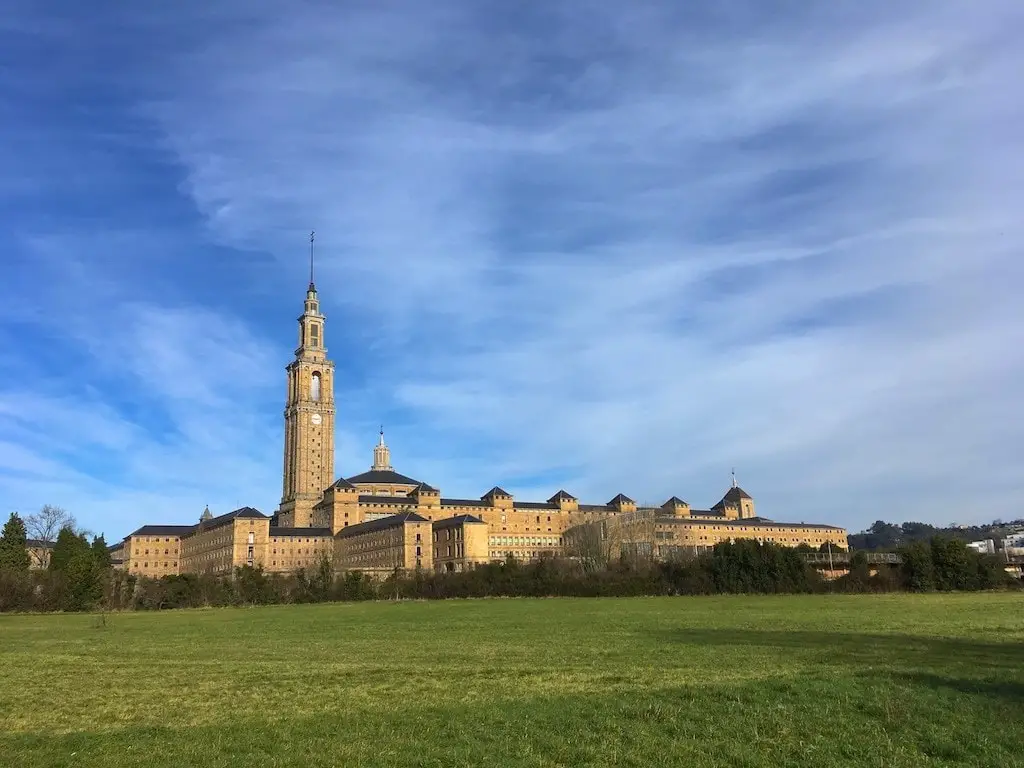
One of the most overlooked iconic buildings in Spain is the Universidad Laboral de Gijón in the northern Asturian city of Gijon. But the Universidad Laboral de Gijón is actually the biggest building in Spain, and of great historical significance to the region.
Initially the Laboral was built as an orphanage and opened in 1955. Coal mining used to be the largest industry in the Asturias region, and because of the dangers of the job, many children were tragically left orphaned or their parents unable to provide for them financially. When this happened, they were sent to Laboral to live and complete their educations.
Now, however, after being abandoned for many years, in the 1980s the Laboral is used as a cultural centre and part of the University of Oviedo campus.
Tourists are welcome to visit even if special exhibitions or events are not on. It is encouraged to check out the church and the tower. The church is the largest oval church in the world, while the tower’s claim to fame is that it is both the tallest building in the Asturias region and the tallest stone building in all of Spain. So naturally, it has amazing views over the city!
While you’re out that side of Gijón, make sure to stop into the beautiful Atlántico Botanical Garden which is just down the road and also well worth a visit.
Mezquita-Catedral, Córdoba
Explored by Maggie from The World Was Here First
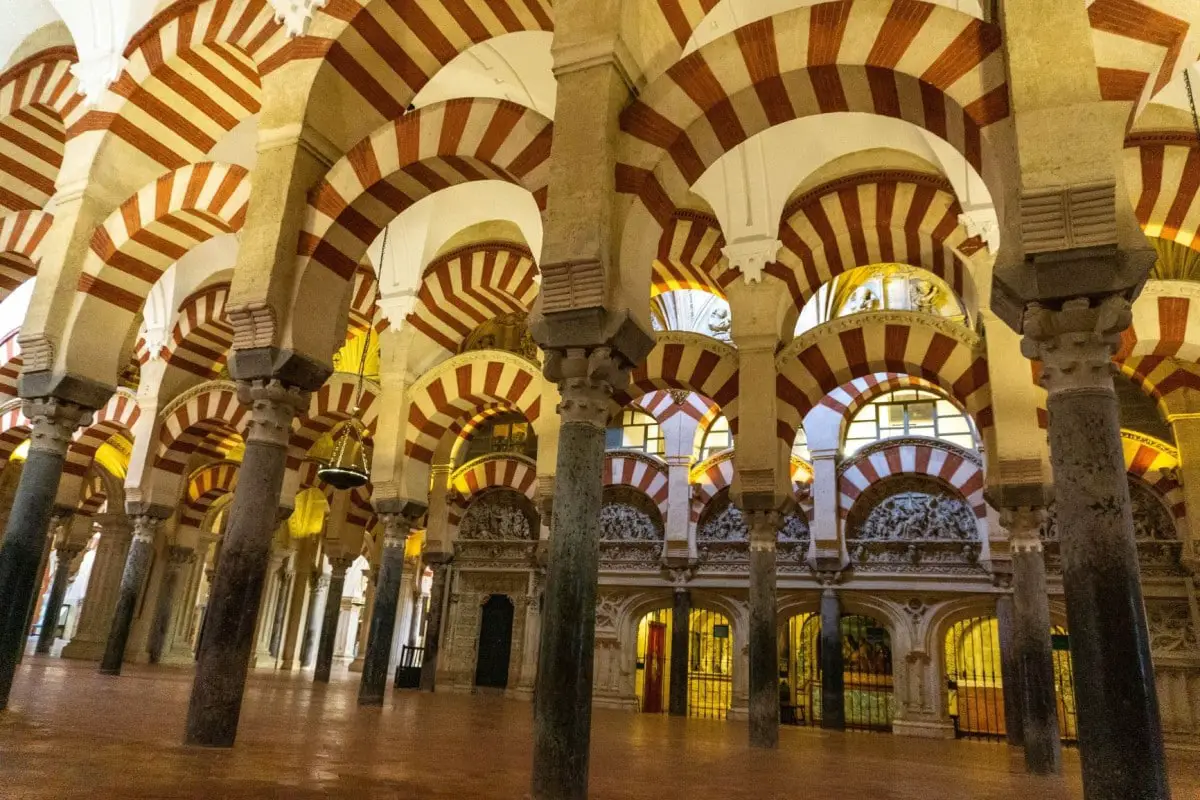
One iconic landmark that cannot be missed on a trip to Spain is the incredible Mezquita-Catedral de Córdoba, or the Mosque-Cathedral of Córdoba! Located in the historic city in Andalucía, you can easily visit Córdoba as a day trip from Seville or, better yet, spend a few days taking in all of the sights.
While there are many things to see in Córdoba, the beautiful Mezquita-Catedral is the biggest and most iconic in the city. The site where this historic complex currently stands was first constructed as a church in the 6th Century. Following the Moorish conquest of Spain, Córdoba became one of the most powerful Islamic cities outside of the Middle East and the humble church was turned into a gargantuan mosque.
Following the Reconquista of Córdoba in the 13th Century, the mosque was then converted into a cathedral and, to this day, stands as the main church of the city, bearing the ecclesiastical name of the Cathedral of Our Lady of the Assumption.
Today you can tour the Mezquita-Catedral and take in the mix of architectural and religious influences that the building bears.
Cathedral of Santiago de Compostela, Galicia
Explored by Alya & Campbell from the Stingy Nomads
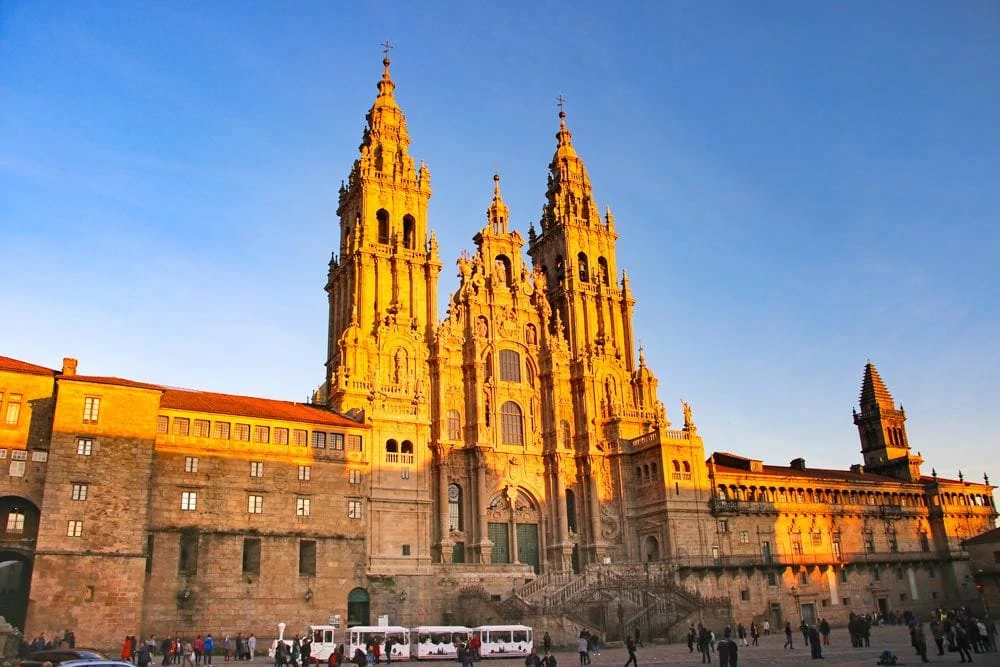
The Cathedral Santiago de Compostela in Galicia is one of the most remarkable Gothic cathedrals in Europe. The construction of the present Cathedral started in 1075 after the discovery of what’s believed to be the tomb of Apostle St. James. The Cathedral is one of the three churches in the world built over a tomb of an apostle of Jesus. Since the Middle Ages, the Cathedral in Santiago de Compostela became one of the most important holy places for Christians. Pilgrims from different parts of Europe started walking to Santiago following the route that is known as the Camino de Santiago, the most popular pilgrimage route in Europe.
The exterior of the Cathedral is truly impressive, with elaborated façades, columns, and porticos with carved saints and scenes from the Old Testament, multiple arches, bell and clock towers. One can spend hours exploring the exterior and interior of the Cathedral.
The Compostela Cathedral is famous for the impressive Botafumeiro ceremony. The Botafumeiro in Santiago de Compostela is the largest censer in the world, it weighs 80 kg and is swung by eight specially trained men. The ceremony takes place several times a year on special occasions such as Resurrection Sunday or Christmas. It’s possible to arrange the ceremony on any chosen day for 450 Euros. Entrance to the Cathedral is free, tourists are not allowed inside during daily mass but anybody who wants can attend the service.
The Temple of Debod, Madrid
Explored by Paul from thetwothatdo.com
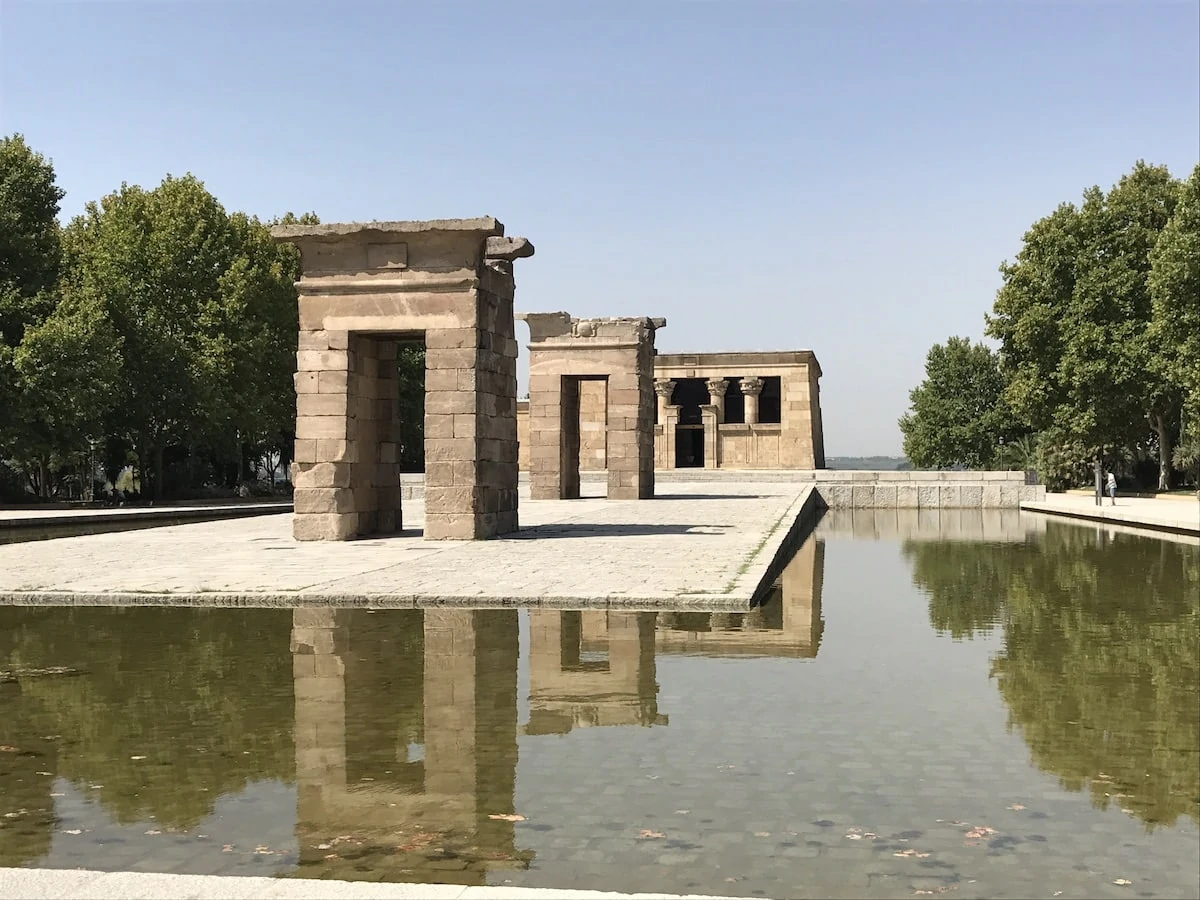
One of the last monuments you’d expect to come across in Madrid is an example of ancient Egyptian architecture.
The Temple of Debod dating back over two millennia to the 2nd century BC is not just any example. It is the only one of its kind in Spain, one of a select few across the world and remarkably well preserved. It is fully deserving of its status as one of Madrid and Spain’s preeminent landmarks and a must see on your visit to Spain’s capital.
Originally a single room chapel constructed in the Nubia region of Egypt south of Aswan The Temple of Debod was subsequently extended during the Ptolemaic dynasty and completed under the Roman Emperors Augustus and Tiberius. Under threat due to construction of the Aswan Dam in the 1960s Egypt donated The Temple to the country of Spain as a thank you for their help in saving the hugely impressive Abu Simbel Rock Temples near the border with Sudan.
Whilst the Temple was reassembled in a different configuration it does maintain the original East to West orientation. Located in the serene setting of the Parque del Oeste less than a mile and a 15-minute walk of Madrid’s Royal Palace, The Temple of Debod is perfect for a moment of contemplation away from the hustle and bustle of a modern city. Time your visit to coincide with a stunning orange sunset and you will be rewarded with one of Madrid’s most tranquil and beautiful panoramas.
Torre Glòries, Barcelona
Explored by Fuad from A Walk in the World
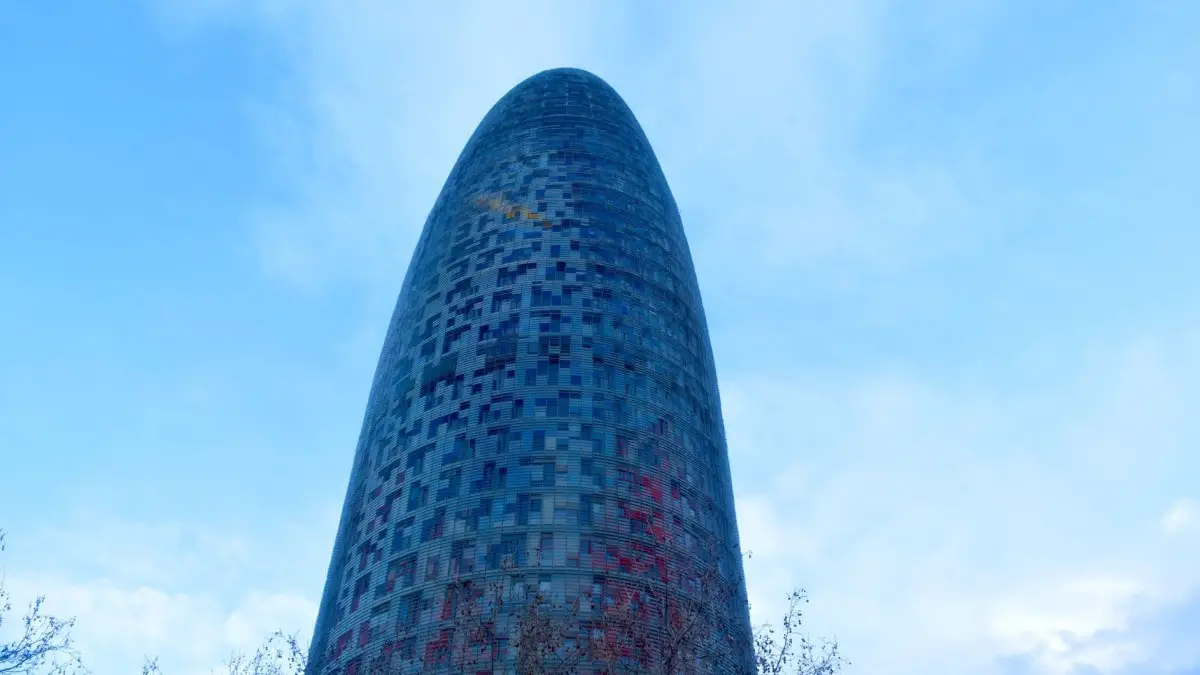
When you are in Barcelona, you must keep two points top of mind. You must not miss a football match if Lionel Messi plays. And, you should keep an eye for the works of Antoni Gaudi; as wherever you travel in Barcelona, you will notice the divine touch of Gaudi, such is his influence on the city.
Keeping the works of Gaudi in mind, from most of the points of Barcelona, you will see a fascinating dome-like building and wonder what that could be… Well, that’s the Torre Glòries (previously known as Torre Agbar) for you, ladies and gentlemen – and surprisingly it’s not designed by Gaudi!
While most of the famous buildings in Barcelona are a century old, Torre Glòries was opened only 15 years back. This building announced the starting point of a new Barcelona – the opening of its technological district. And since then, this has been operating as the city’s business hub.
With 38 storeys, the Torre Glories is the tallest landmark in Barcelona and will remain the same until the construction of La Sagrada Familia is completed. And according to its architect, he got the inspiration of designing the building from Montserrat, a notable mountain near Barcelona.
You will get a beautiful view of Torre Glòries from the hill of Parc Guell. However, as you get closer to it, you will notice that it has a lot of windows. In fact, there are 4400 windows in this skyscraper.
This tower changes colour during different important events and festivals and has become an important icon of Barcelona. A visit to Torre Glòries should be on top of your things to do list in Barcelona.
Aqueduct of Segovia
Explored by Becki from Meet Me In Departures
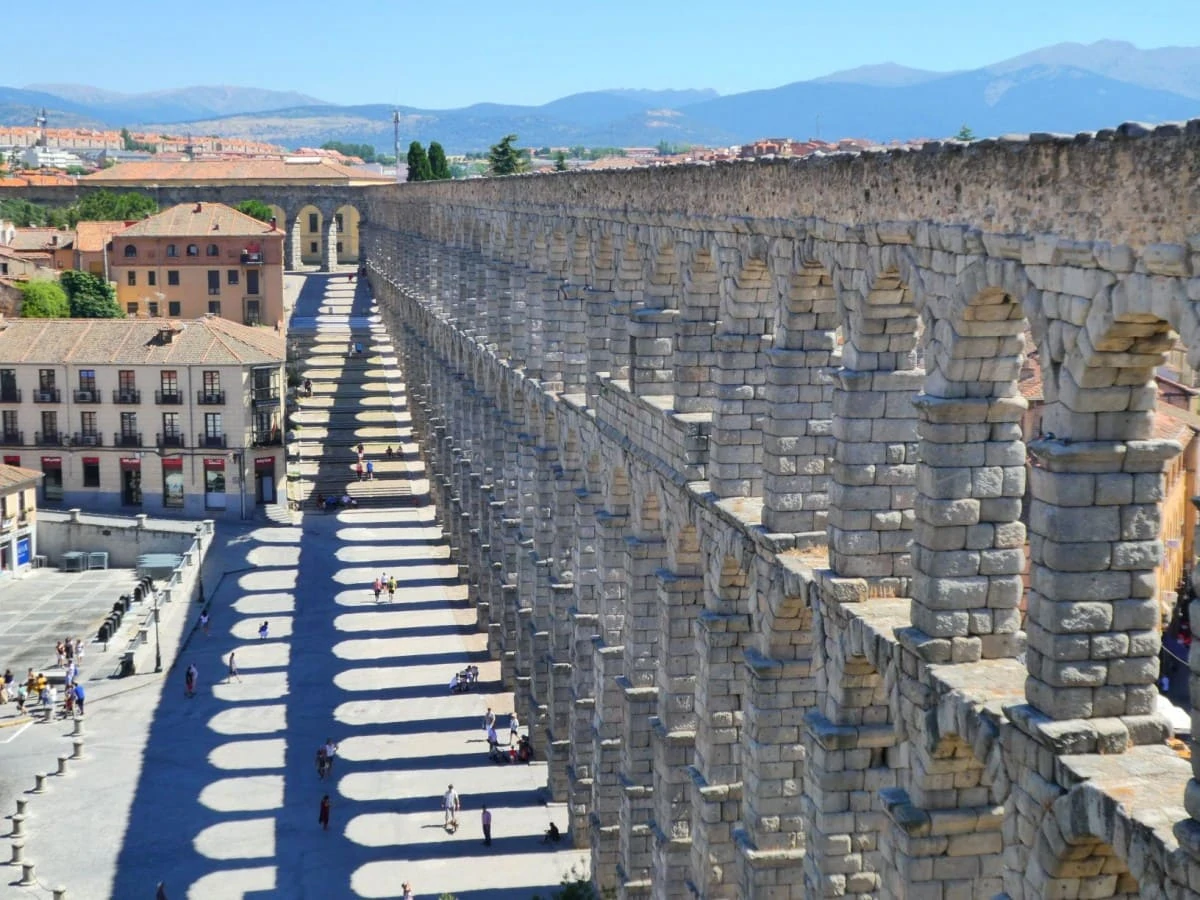
The ancient city of Segovia is a must-see if you have a penchant for fairy-tale castles, Roman ruins and ancient walled cities. An absolute must for your Segovia itinerary is the city’s most notable landmark, the Aqueduct of Segovia; El Aqueducto.
If you read up about any of the histories on the UNESCO listed city, you’ll find there are several fascinating stories as to how the aqueduct got there. Some say it was built by Hercules while others go down a darker route and say it’s the work of the Devil himself. As enchanting as these fables are, it was in fact built by the Romans at around the 1st century AD.
The iconic ancient structure was built without any mortar to hold it together; it consists of more than 160 arches which have been cut in such a way so that the aqueduct is held together by gravity. Amazingly the aqueduct still works right to this day; hundreds of years after this engineering feat was built, it still delivers fresh water to the city. The aqueduct is so important to the city, that it’s the symbol of Segovia, and you’ll find little images of it dotted all over the place.
Other notable things to see in the city are the Alcazar of Segovia, like many castles around the world, this claims to be the inspiration for Disney’s Magic Kingdom. Also, don’t miss the Gothic style Segovia Cathedral, as well as spending some time exploring the pretty cobbled streets in the Jewish Quarter and the Old City walls.
Plaza Mayor, Madrid
Explored by Lee from The Travel Scribes
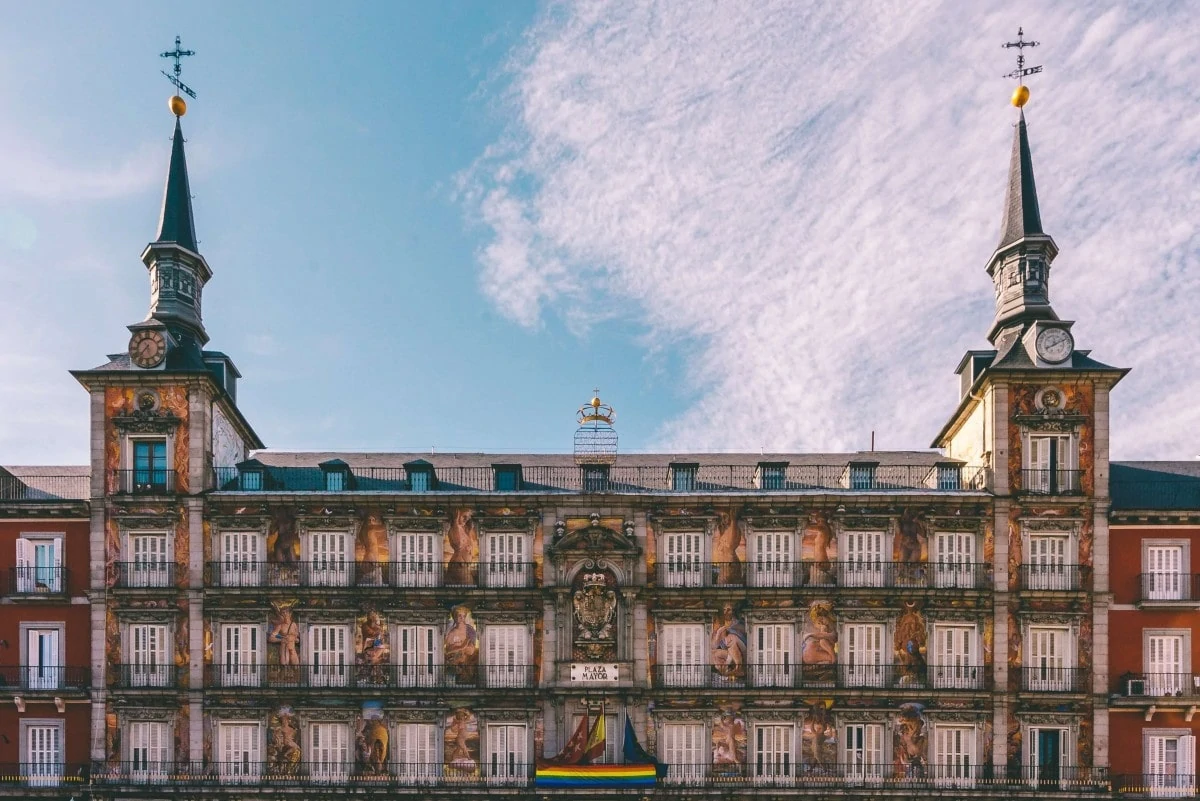
One of the most photographed landmarks in Spain, Madrid’s Plaza Mayor has to make it on a list of notable places in the country. With a history stretching back as far as the reign of Philip III, this incredible public space was designed by Juan de Herrera and completed in 1619. Alas, the square has seen its fair share of disasters since it was first opened to the public. A fire in 1631, followed by another in 1670 and the last in 1790! This trifecta of disaster saw the square and surrounding buildings reconstructed each time, to the gorgeous structures that still stands today; finally ‘finished’ in 1854.
Originally a food and goods market (the Plaza del Arraba), this inspiring landmark has seen many events over the years – bullfighting, gruesome public executions and even the trials during the Spanish Inquisition! Today its purpose is a little simpler – it’s a meeting place for visitors frequenting one of its many outdoor cafes, plus hosts a number of fabulous festivals, concerts and outdoor events. Head there in winter and you might even be able to visit the twinkling lights and stalls of the annual Christmas Market, where you can pick up a few local trinkets as stocking stuffers.
Golden Tower, Seville
Explored by Nisha & Vasu from Lemonicks
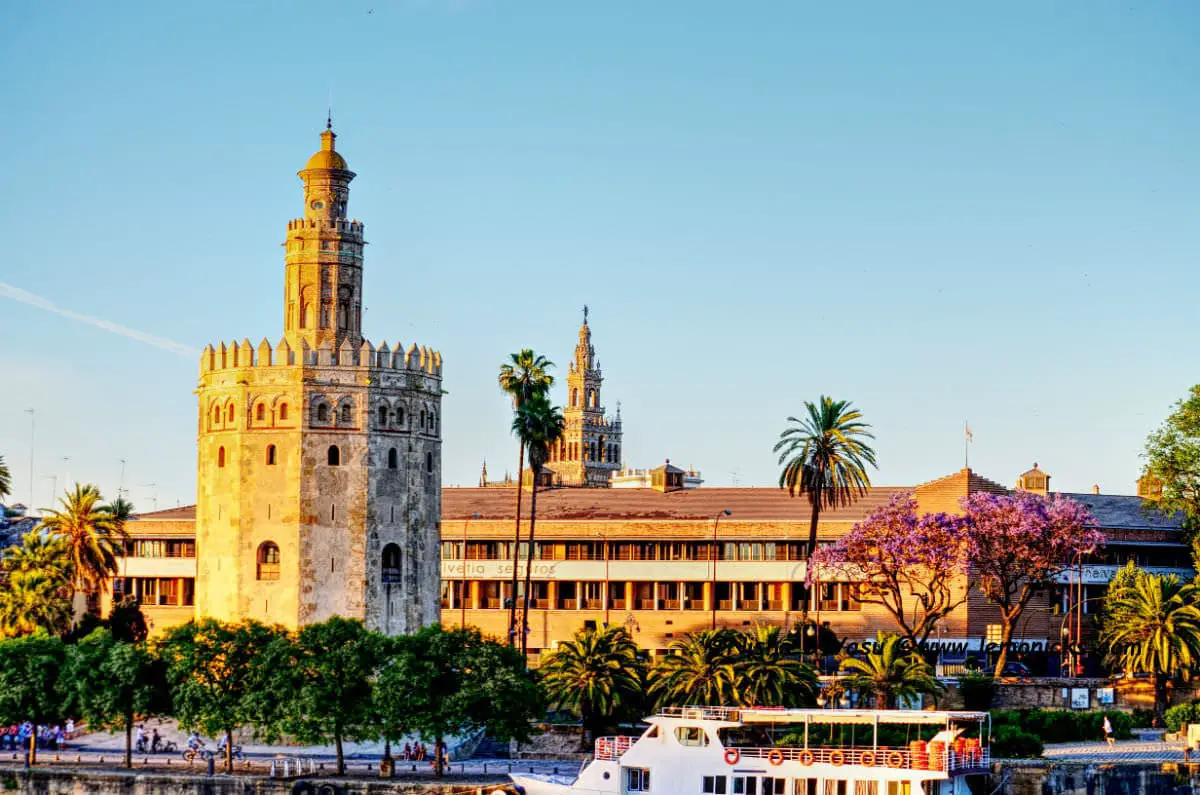
The Golden Tower, located on the banks of the river Guadalquivir next to the Puente San Telmo in Seville, is a remnant of the Moorish fortified walls. The walls with 166 towers and 15 gates enclose the city of Seville. The Golden Tower is actually a watchtower designed to protect the docks and has played an important role in the city’s defense and commerce over the last eight centuries. In earlier days it was part of two towers, one either side of the river and connected by a chain. This chain was used to stop ships sailing in and out as a part of the defense system. Later the tower was used to store gold imported from abroad.
The Golden Tower has twelve sides and another twelve-sided small tower on top of it. When it was built, the dome was covered in gold and probably this is why it got its name as the Golden Tower. It is home to a naval museum having flags, maps, scale models of ships, diving equipment and other maritime memorabilia spread over several floors.
One of the must attractions if you are in Seville, you can climb to the top for a great view of the river and the town.
Go towards the evening as the sun rays falling on the tower makes it even more beautiful, the golden reflection on the river looks amazing. There are river cruises as well and several restaurants across the river to enjoy your evening.
La Rambla, Barcelona
Explored by Lee from The Travel Scribes
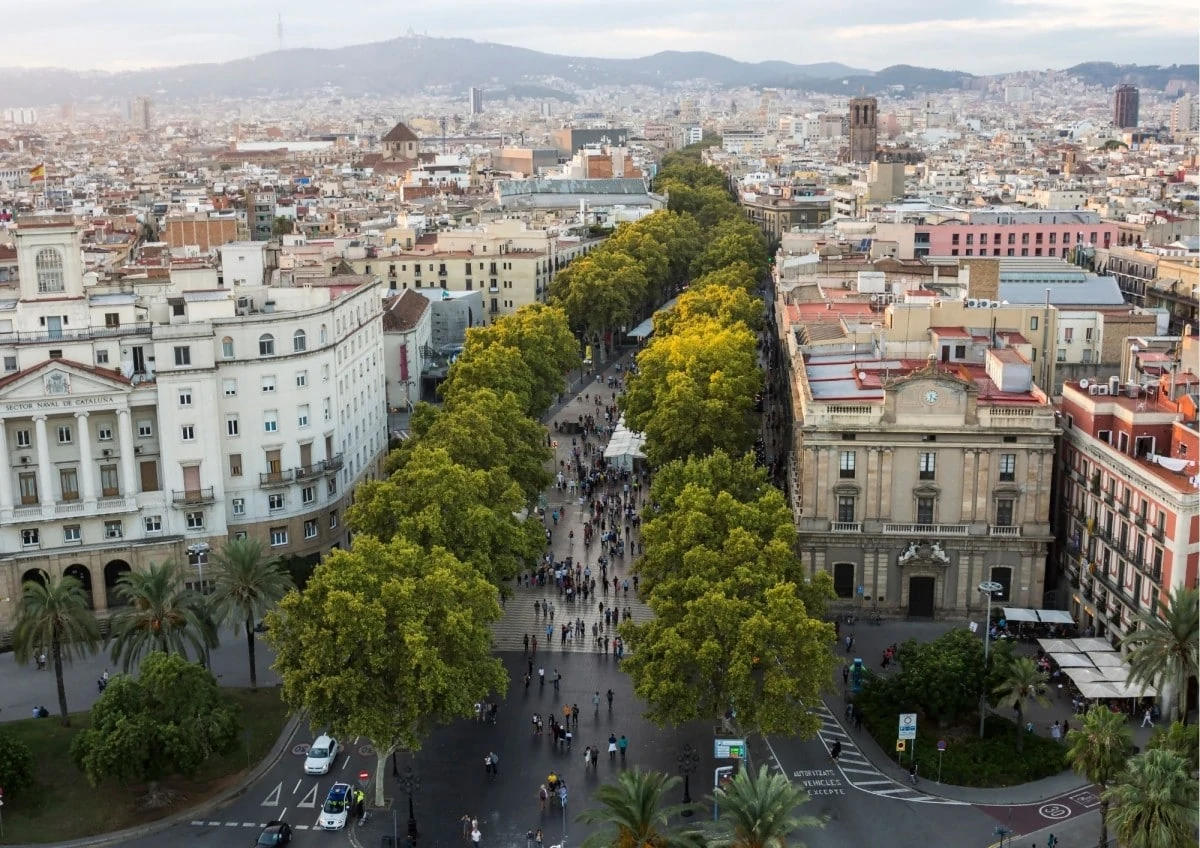
It’s the beating heart of Barcelona, La Rambla (aka Las Ramblas), the tree-shaded pedestrianized street running like gold through the centre of the city for over 1.2km. Often thronged with tourists, this famous street ‘starts’ at Port Vell, located near the cruise terminal, to Plaça de Catalunya at the north, while also dividing up two quarters – El Raval to the west and the Gothic Quarter (Barri Gòtic) to the east.
This world-renowned boulevard has some unique origins, as it was a stream filled with sewage (yes, really!) helping to drain away the rain from the Collserola hills. Around 1377 the city started to extend the walls and the stream was diverted to outside it, with La Rambla gradually then taking pride of place as a central street. It was after this that the street truly came into its own, used as a meeting point for markets and festivals, and suddenly flanked with major religious monuments like the Jesuit Bethlehem and Capuchin monasteries. It was also the site of many conflicts – the St James’ Night riots, the Spanish Civil War and many attacks including the more recent terrorist attack of 2017.
Nowadays there is no doubt that La Rambla is a major landmark in the city, and that nearly every visitor will walk its length at least once on their trip. From street vendors to souvenir shops, flower sellers to overflowing cafes, there’s nothing like La Rambla when it comes to the frivolity and frenetic pace of Barcelona.
Castilla Monumento Colomares, Benalmadena
Explored by Paulina from Paulina on the Road
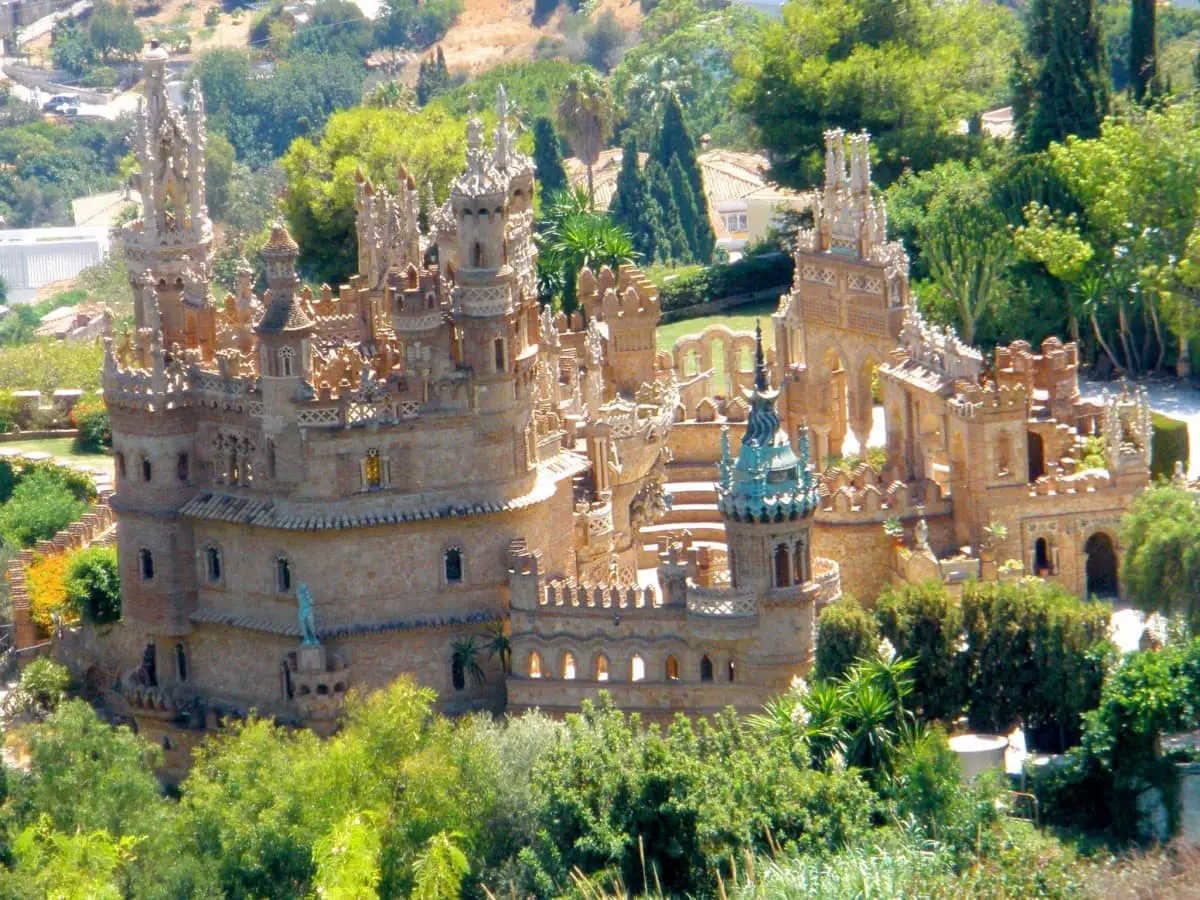
When it comes to visiting Benalmadena, you are surely getting more than just beautiful beaches as the place is filled with some of the most iconic restaurants, clubs with great nightlife, and attractions for the whole family to enjoy. But one of the best things to do in Benalmadenais visiting Castilla Monumento Colomares, a castle straight out of a fairy tale.
This castle welcomes tourists with a gigantic fountain placed in the front yard and towers on each side. You’ll also find one of Europe’s most prominent Buddhist meditation monument, Benalmadena Stupa, coloured in bright white.
Each morning you can find several people gathered here for meditation, which you can join. Or, if you’re a nature lover, you can take a stroll in the nearby Mariposario de Benalmádena, a park dedicated to 1500 different butterfly species.
Almudena Cathedral, Madrid
Explored by De Wet and Jin from Museum of Wander
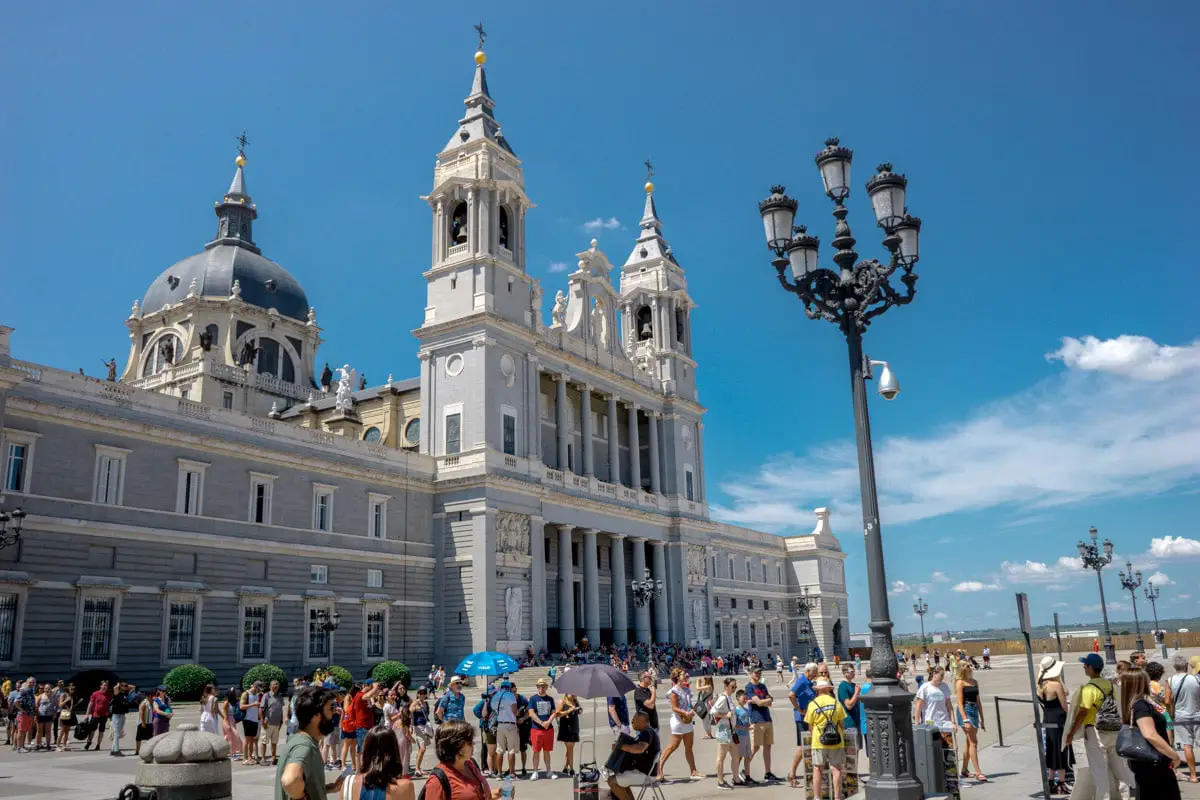
The Almudena Cathedral in central Madrid is the city’s main cathedral and a worthwhile stop on your self-guided walking tour of Madrid. Situated right next to the Royal Palace, you will be forgiven if you had thought it must be very old.
The Almudena was actually only completed in 1993! Although construction started in 1879, work came to a complete halt during the Spanish Civil War. When the project finally resumed during the 50’s the original plan was changed so that the exterior would match that of the adjacent Royal Palace. It took another few decades before it was officially opened by Pope John Paul II in 1993.
The Almudena might look like your classical Spanish Catholic cathedral from the outside, but wait until you see the modern interior! The stained-glass windows can only be described as religious pop art. The Neo-Gothic interior is a colourful collaboration of styles and artists, which makes it one of the most unique cathedrals you’ll ever visit.
Perhaps the most striking feature of the Almudena is the ceiling. The mishmash of patterns and colours actually ties everything together to form a spectacular sight.
The Almudena Cathedral might not be one of the largest or the oldest in the world, but it sure is one of the most interesting. Entrance to the Almudena is free of charge.
Parc Güell, Barcelona
Explored by Nat from Boletworldwide
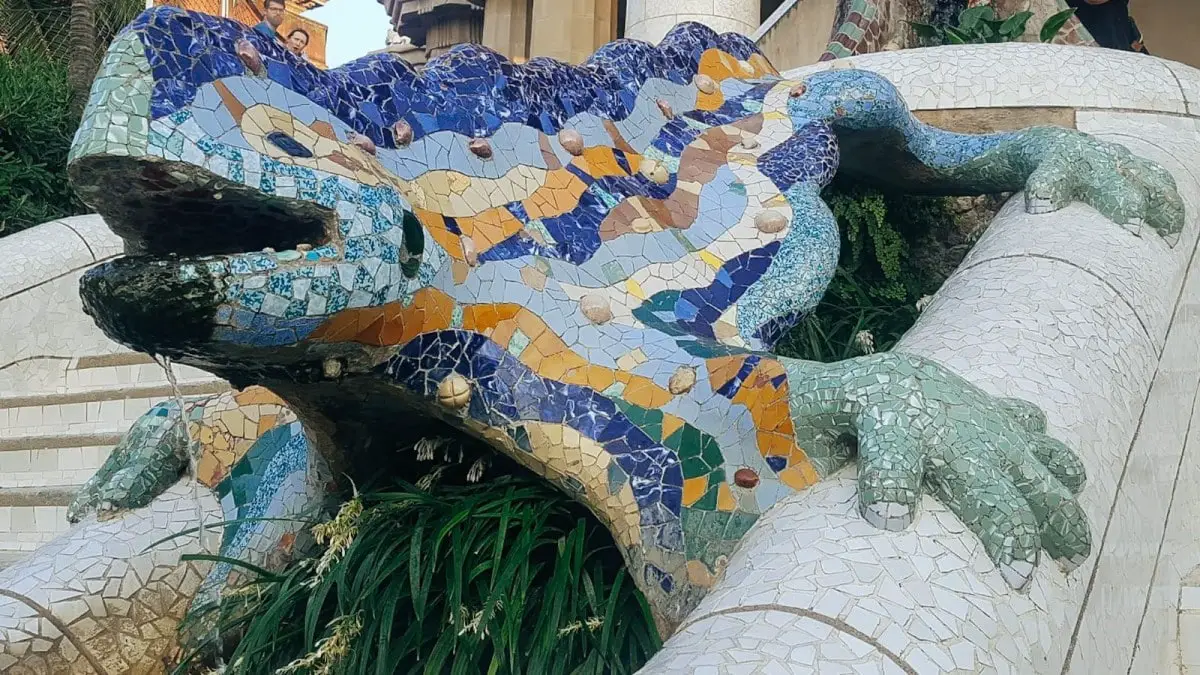
Parc Güell (also called Park Güell) is one of the most iconic places in Barcelona. It’s located in Carmel Hill and is a public park with a private zone. The park is a composition of gardens and architectural parts created by Antoni Gaudí.
It was built between 1900 and 1914 and opened officially in 1926, later (in 1984), becoming a UNESCO World Heritage Site. Find yourself transported to another world with unusual creations, like the famous mosaic salamander of Barcelona, known as “el drac” which means ‘the dragon’.
Make sure you buy tickets online as they are cheaper. Or arrive early in the morning (7am) to enter for free. Even though it’s early, it’s totally worth it to enjoy the sunrise from there and have the whole park to yourself.
Real Alcazar
Explored by Marianna from Irma Naan World
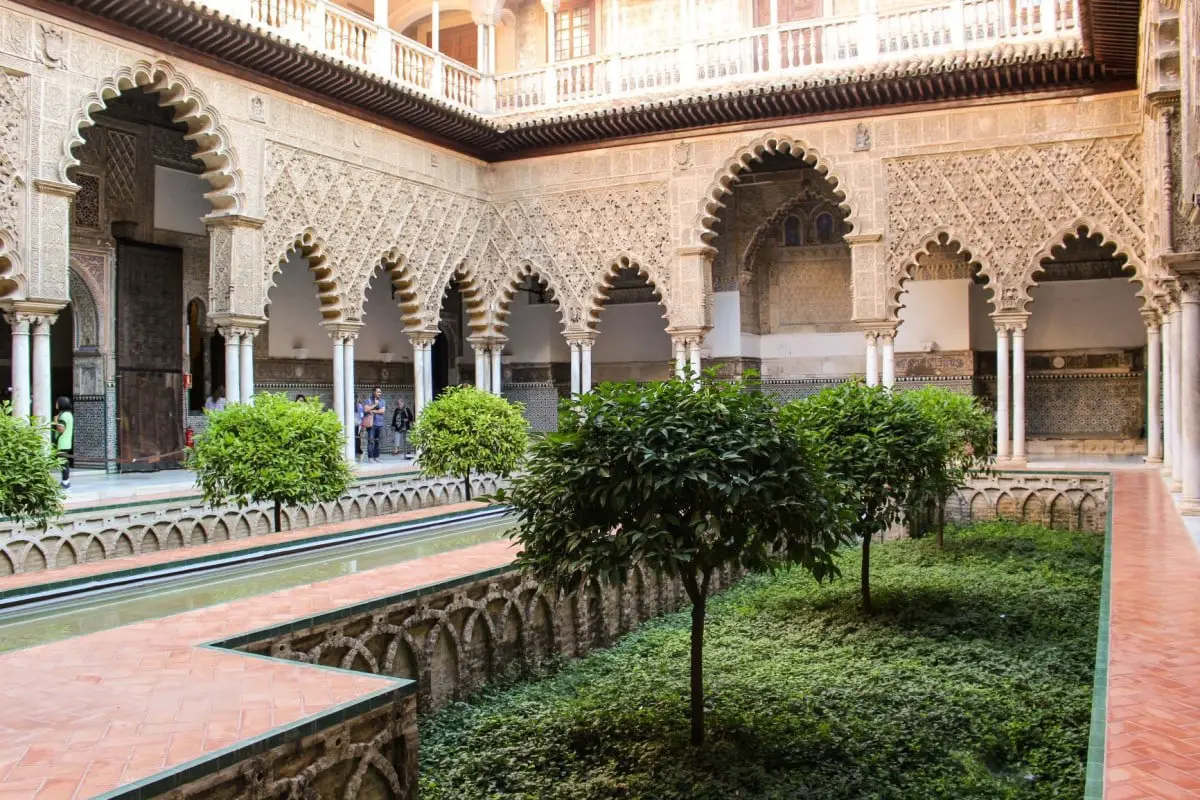
Real Alcazar or the Royal Palace is one of the most important buildings in Seville. Built in the famous Mudejar style (using Islamic elements in architecture), it has served as a home for Christian monarchs for almost 700 years after the conquest of Seville. Real Alcazar is less popular than Alhambra, but isn’t less beautiful. The interior walls are covered with colourful majolica tiles, the patios with ponds and lush greenery, and the gardens with flowers, palm and fruit trees that are perfect for strolls. While the entire palace is magnificent, there are three places everyone should visit: the gardens, the Hall of Ambassadors and Patio de las Doncellas.
These places are spectacular, but my personal tip for travellers is not to miss the Cuarto Real (the royal quarters). This is a part of Real Alcazar used by the current royal family of Spain and it’s not included in the main tour, so visitors have to buy separate tickets. It is totally worth the extra cost as the rooms are splendid. But be ready for an extra security check!
Real Alcazar will also be heaven for Game of Thrones fans as multiple episodes were filmed there. You will recognize the locations immediately, like the gardens, the underground water tanks and the Hall of Ambassadors.
Santa Barbara Castle, Alicante
Explored by Derek and Mike from Robe Trotting
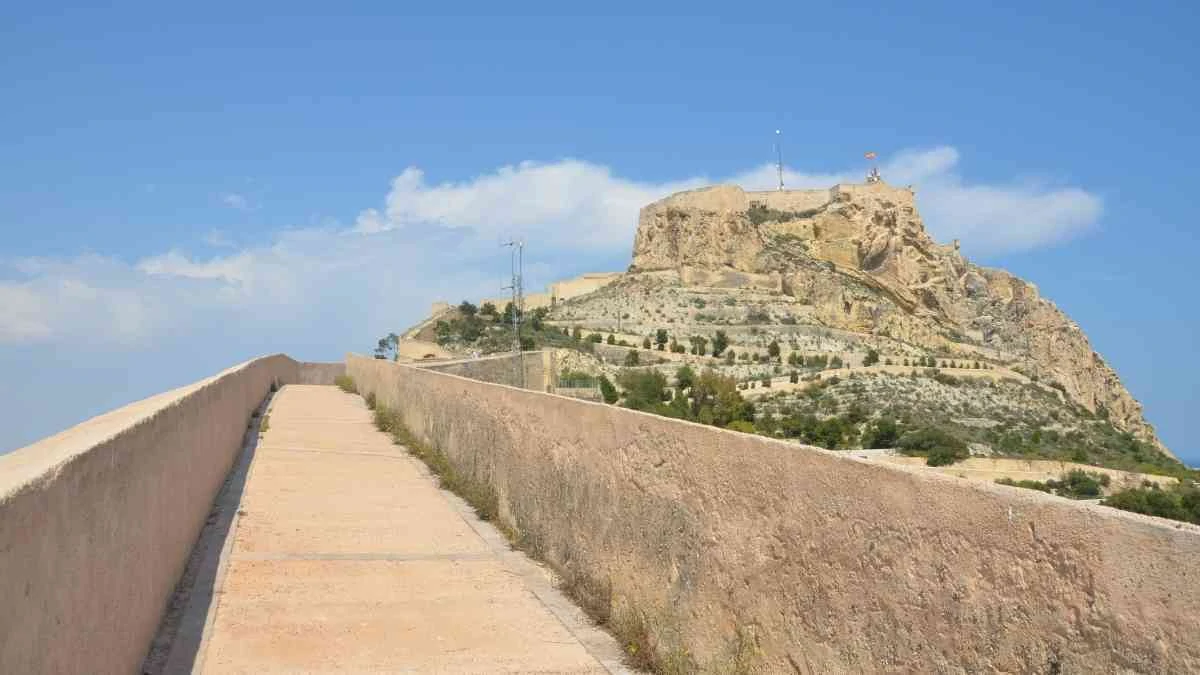
One of the most beautiful and interesting landmarks in Spain is Santa Barbara Castle, a mammoth fortified citadel located in Alicante. If you visit this coastal port town in the southeast of Spain, it must be on your itinerary. No Alicante city break is complete without a visit to Santa Barbara Castle.
The citadel sits atop Mount Benacantil, a mountain overlooking the city of Alicante, its coastline and the sea. It’s been occupied for thousands of years and artefacts from the Bronze Age, Roman era and Moorish Spain have all been uncovered on the grounds of Santa Barbara Castle.
The fortress on the site dates back to the time of Moorish rule when Arabs controlled the Iberian Peninsula. In 1248 it was captured by Castilian forces on 4 December, the feast day of Saint Barbara, for which the castle was renamed. It was captured and recaptured in the subsequent years before Spain was unified. Numerous rulers reconstructed the castle after each attack and in 1963 it was opened to the public.
Today, you can hike to the top of Mount Benacantil and tour the castle when you visit Alicante. There are also funiculars built into the mountain which can assist in the climb for about 2 EUR each way (2.35 USD/1.85 GBP). Once you reach the castle, guided tours are available and there are countless tours from the city of Alicante that can be booked to see this beautiful landmark in Spain.
Plaza de España, Seville
Explored by Melissa from Parenthood and Passports
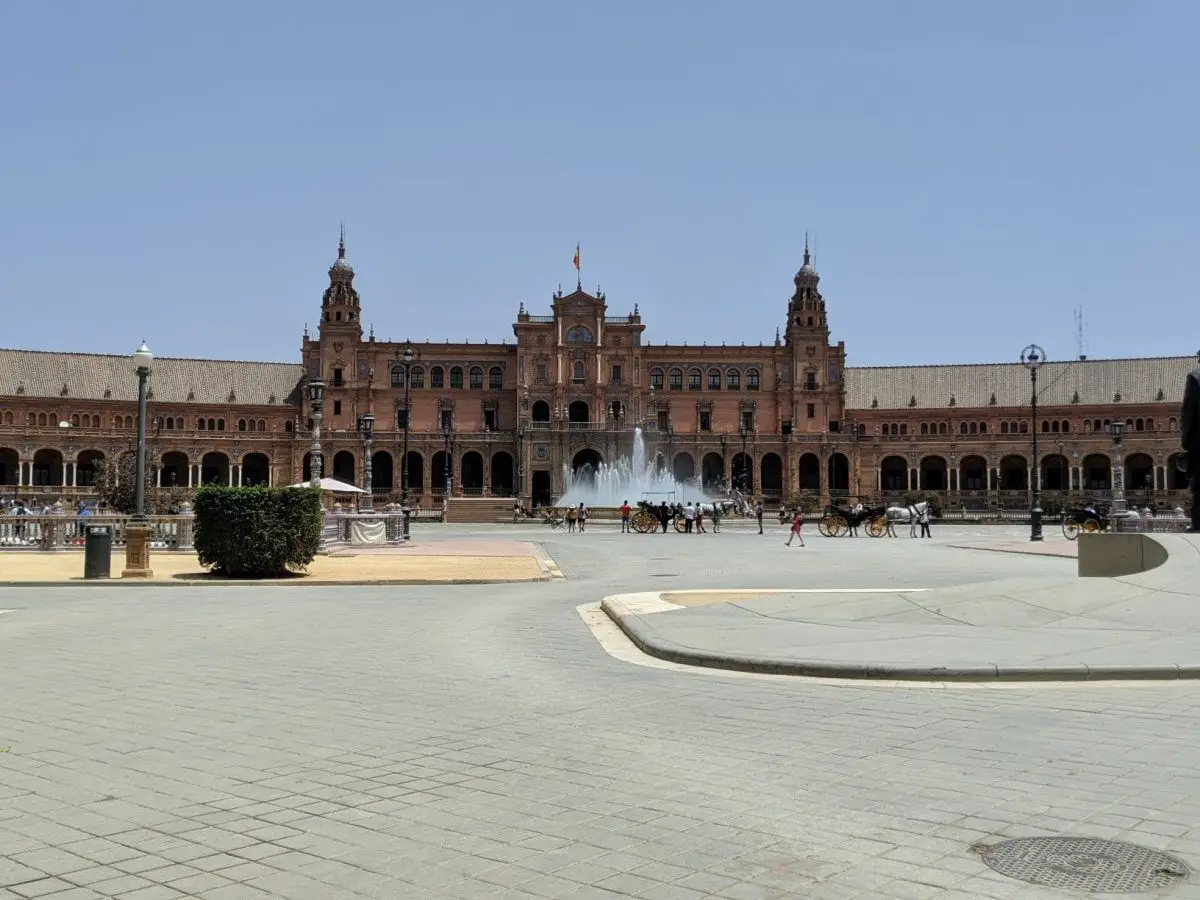
Plaza de España is one of the most iconic landmarks in Seville. The large plaza built in 1928 is a great place to explore or simply relax and take in the atmosphere.
Located on the edge of Maria Luisa Park, the picturesque plaza boasts a large fountain in the centre. Surrounding the fountain, there are man-made canals with four bridges that extend over the water connecting the buildings on the far side of Plaza de España to the main, open area of the plaza. Visitors can take a paddleboat ride around the scenic semi-circle plaza or explore the colourful alcoves adorned with intricate ceramic tiles. The alcoves built around the plaza represent the different regions of Spain. Each alcove is flanked with bookcases where you can often find books about the region of Spain represented by that alcove or even favourite books left behind by visitors to the plaza.
Plaza de España is also a popular place to find street performers working for tips and locals lounging in the park underneath shade trees on a nice day.
Centrally located and in walking distance from other popular tourist sites like the Seville Cathedral and Real Alcazar, Plaza de España is a must-visit whether you have just 2 or 3 days in Seville or much longer.
Landmarks in Spain Interactive Map
Want to check off all the sights? Use this interactive Spain tourist attractions map:
So what do you think about our must-visit landmarks in Spain? Did we miss any off that you think should have made it into the top 30? Let us know in the comments below…
Or if you’re interested to check out other amazing landmarks from around Europe:
- Here are the must visit landmarks in Italy
- The top landmarks in Croatia
- Landmarks from England to make it onto your UK travel list
- The top French landmarks
- 21 iconic buildings and landmarks in Germany
- The best landmarks to visit in London
Want to save this for later? Why not pin it…
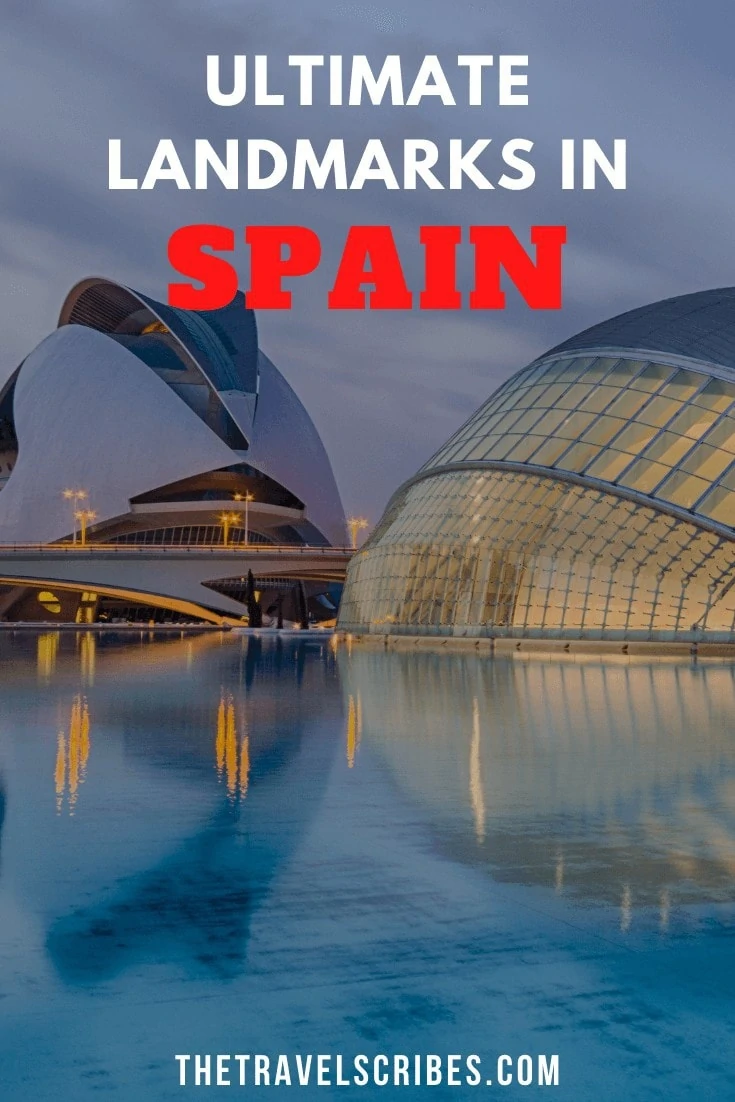


So happy to have participated in this and to read all the other amazing places!! Great post!
Author
Thanks Nat! And thanks for your awesome entry… we loved finding out about a load of new landmarks and have added quite literally a bucket load to our must-visit list…